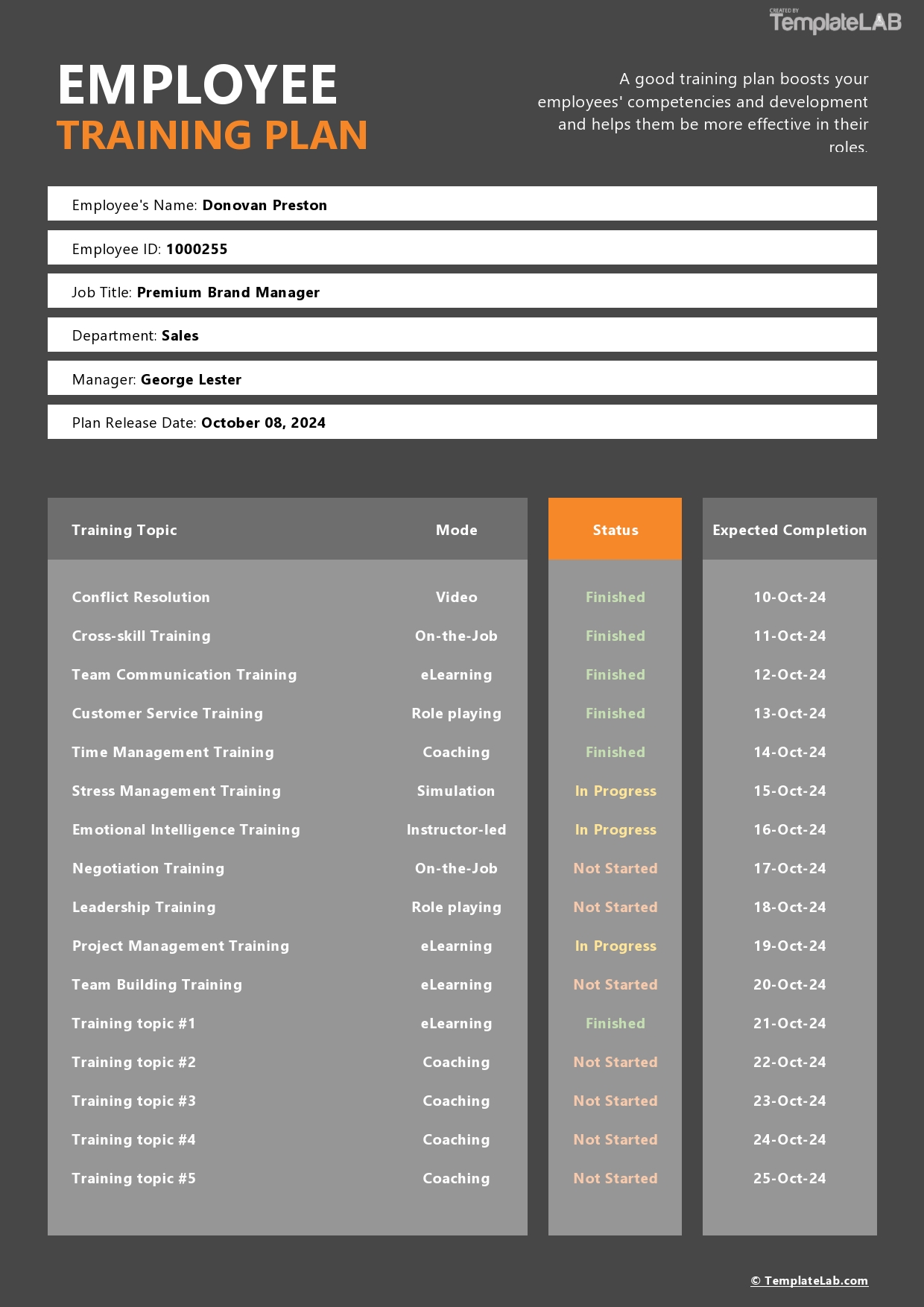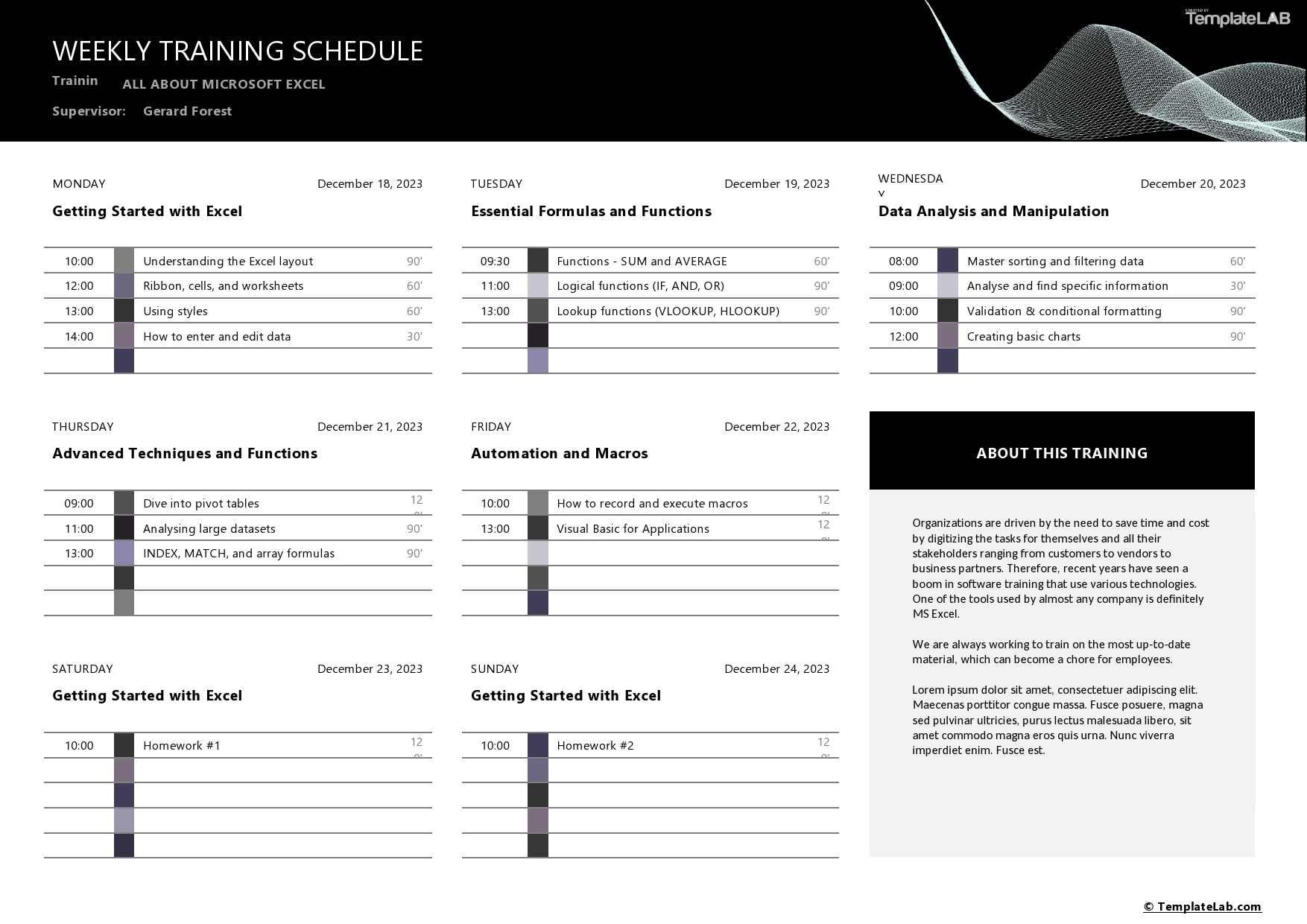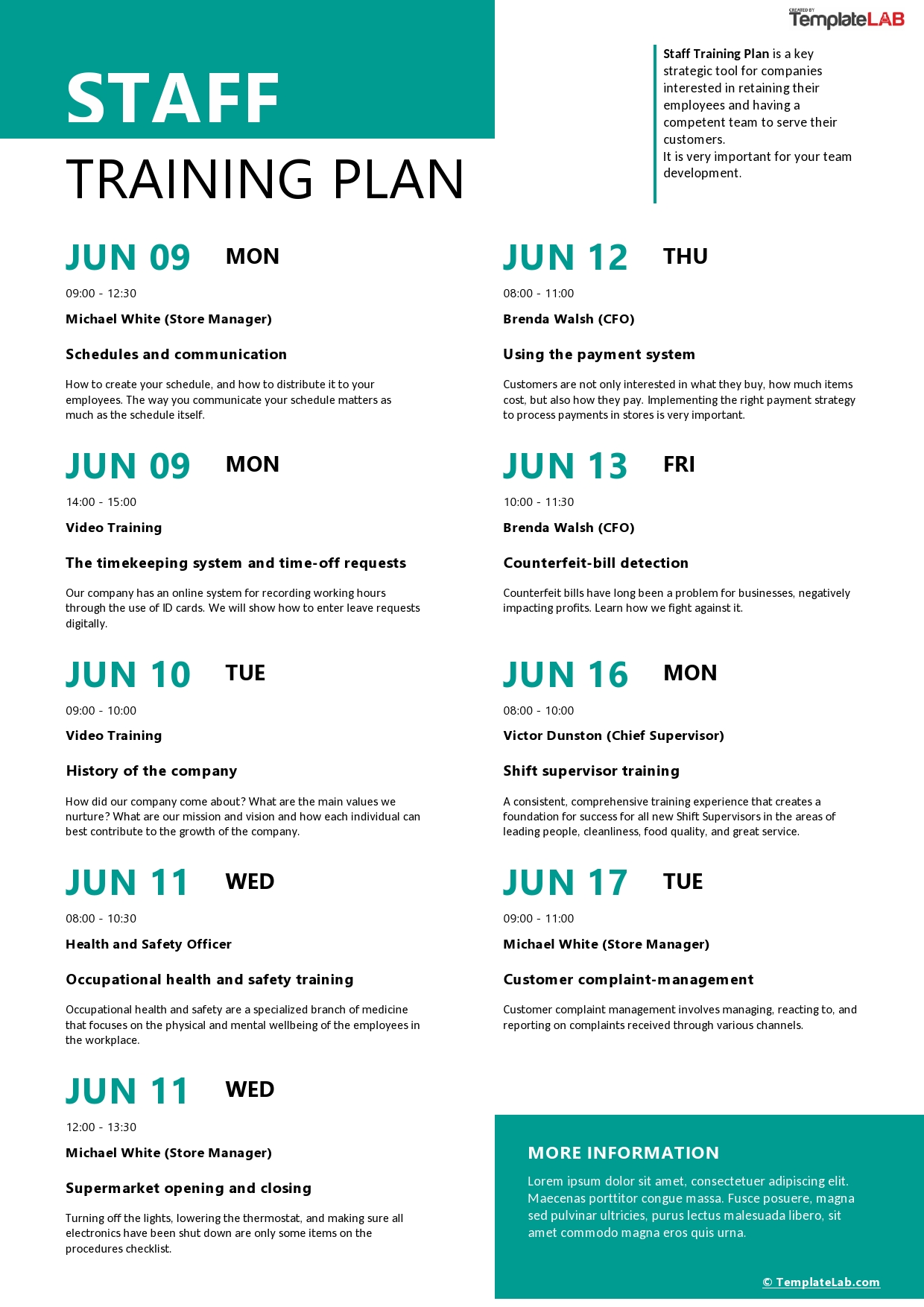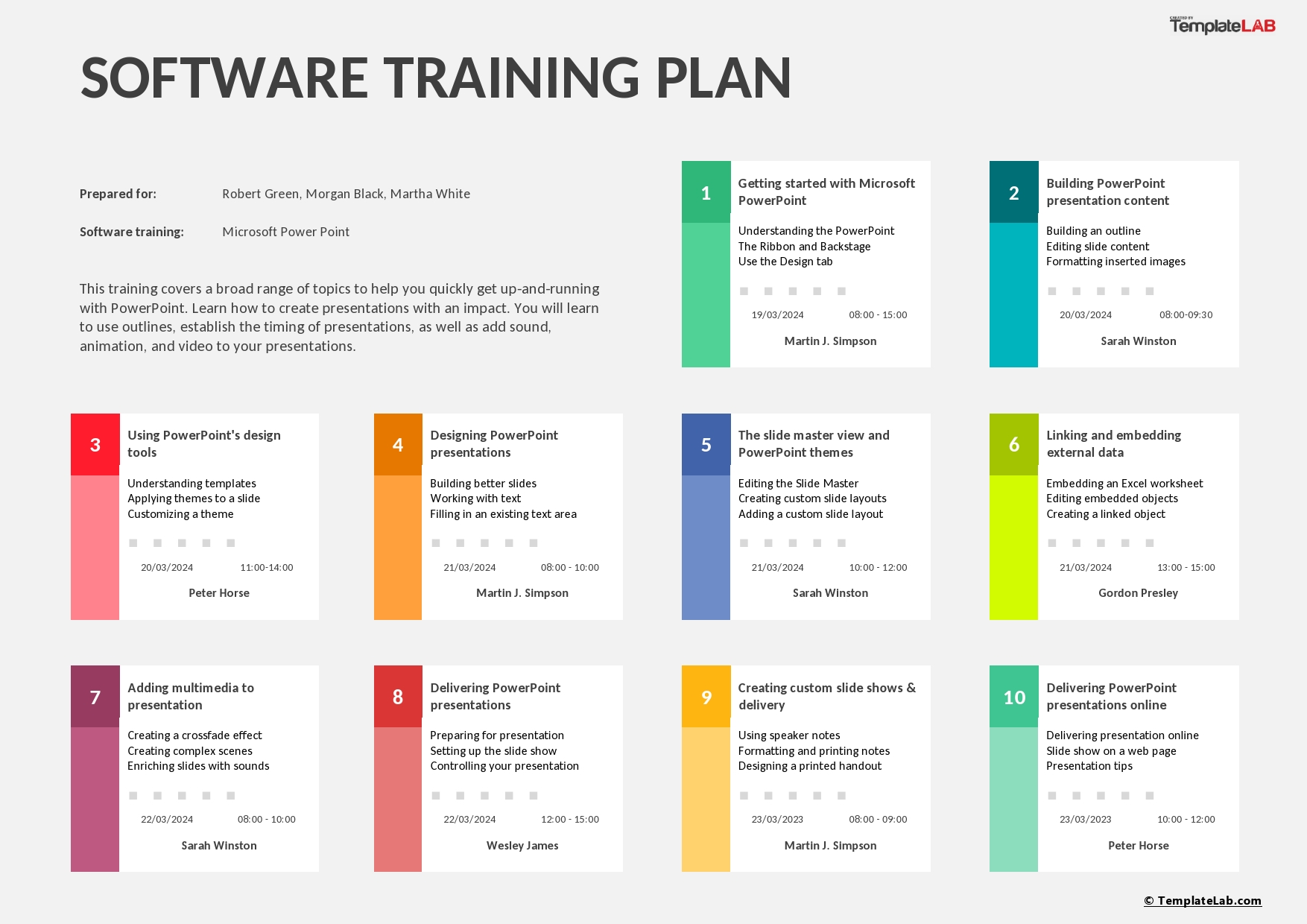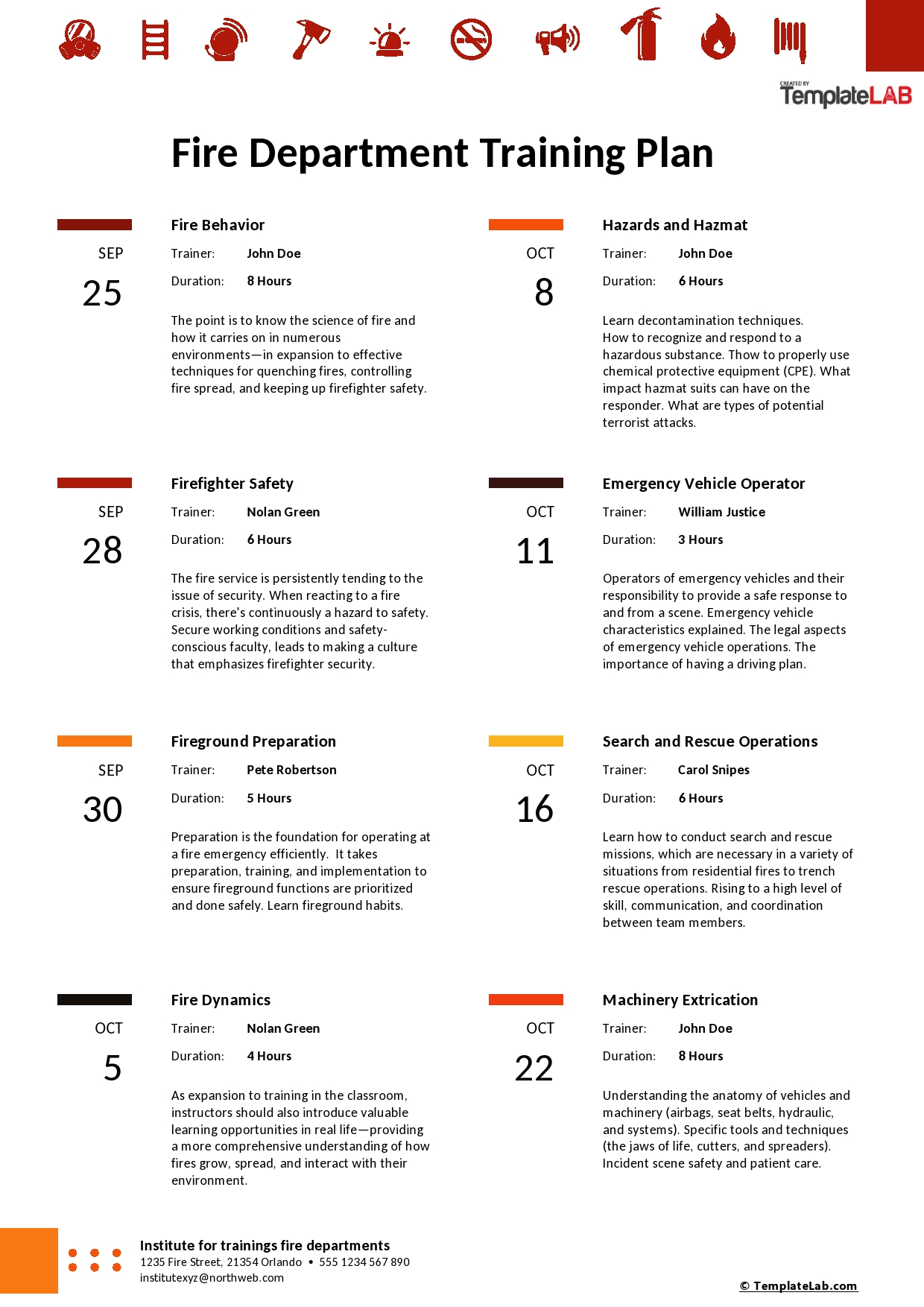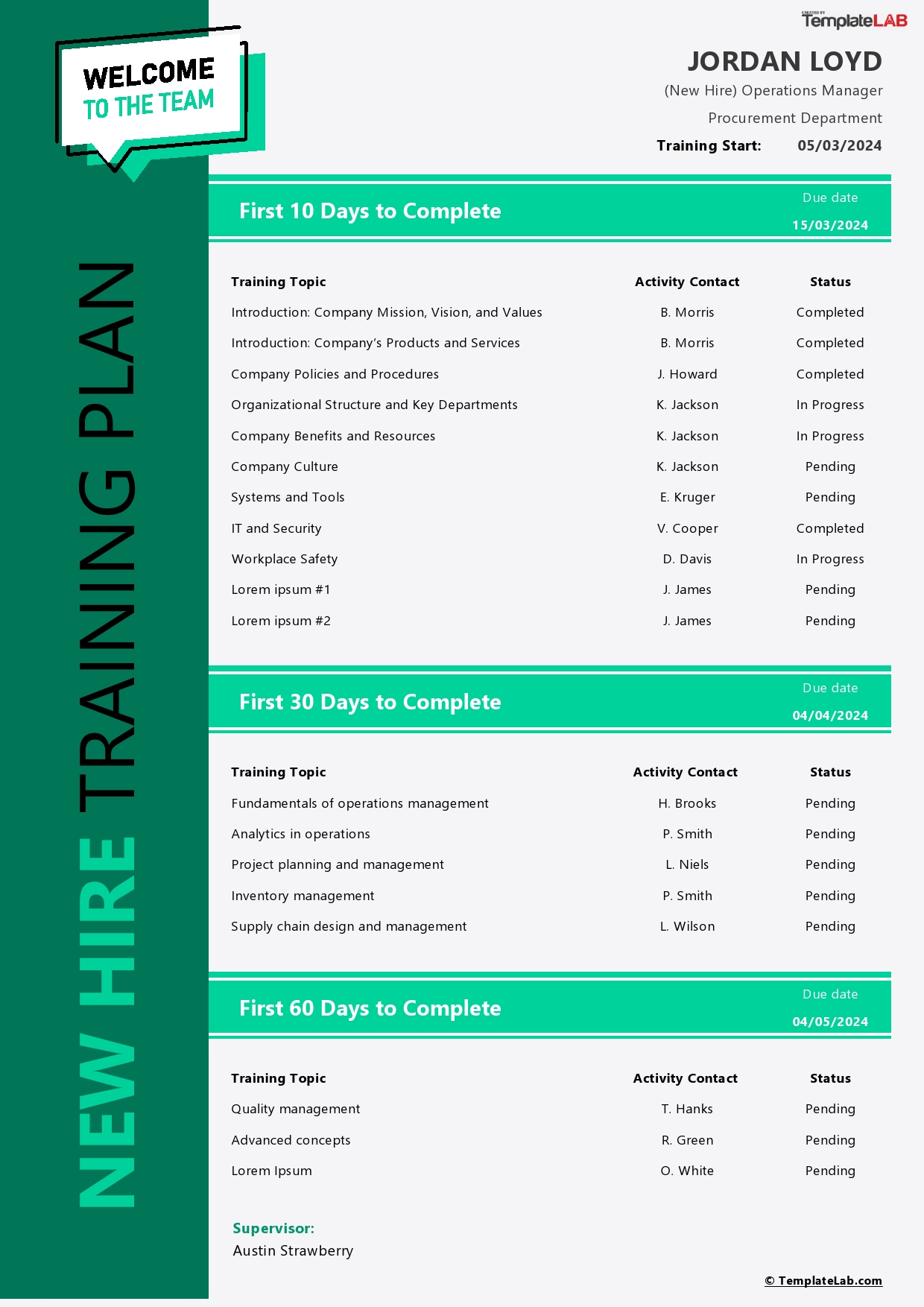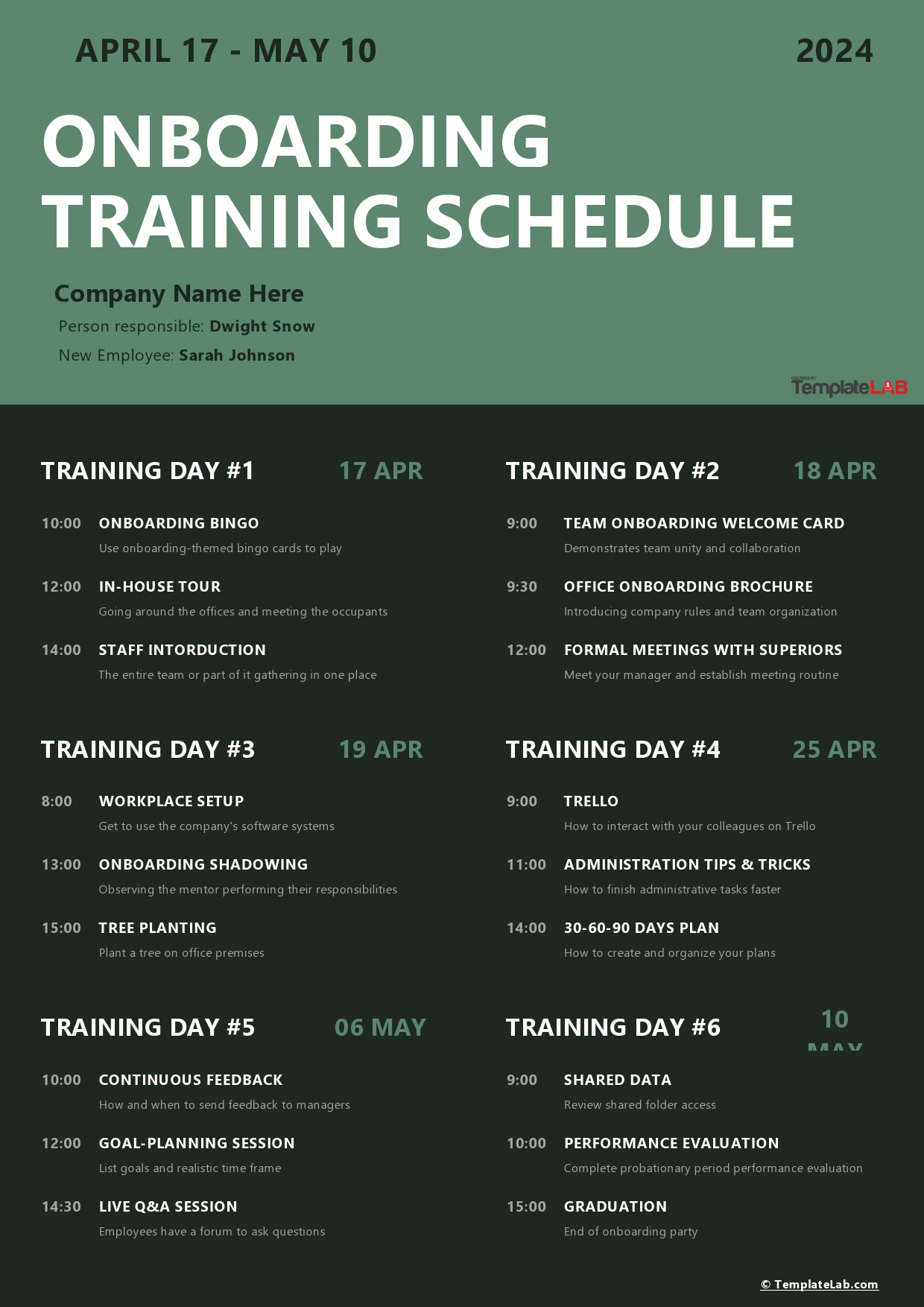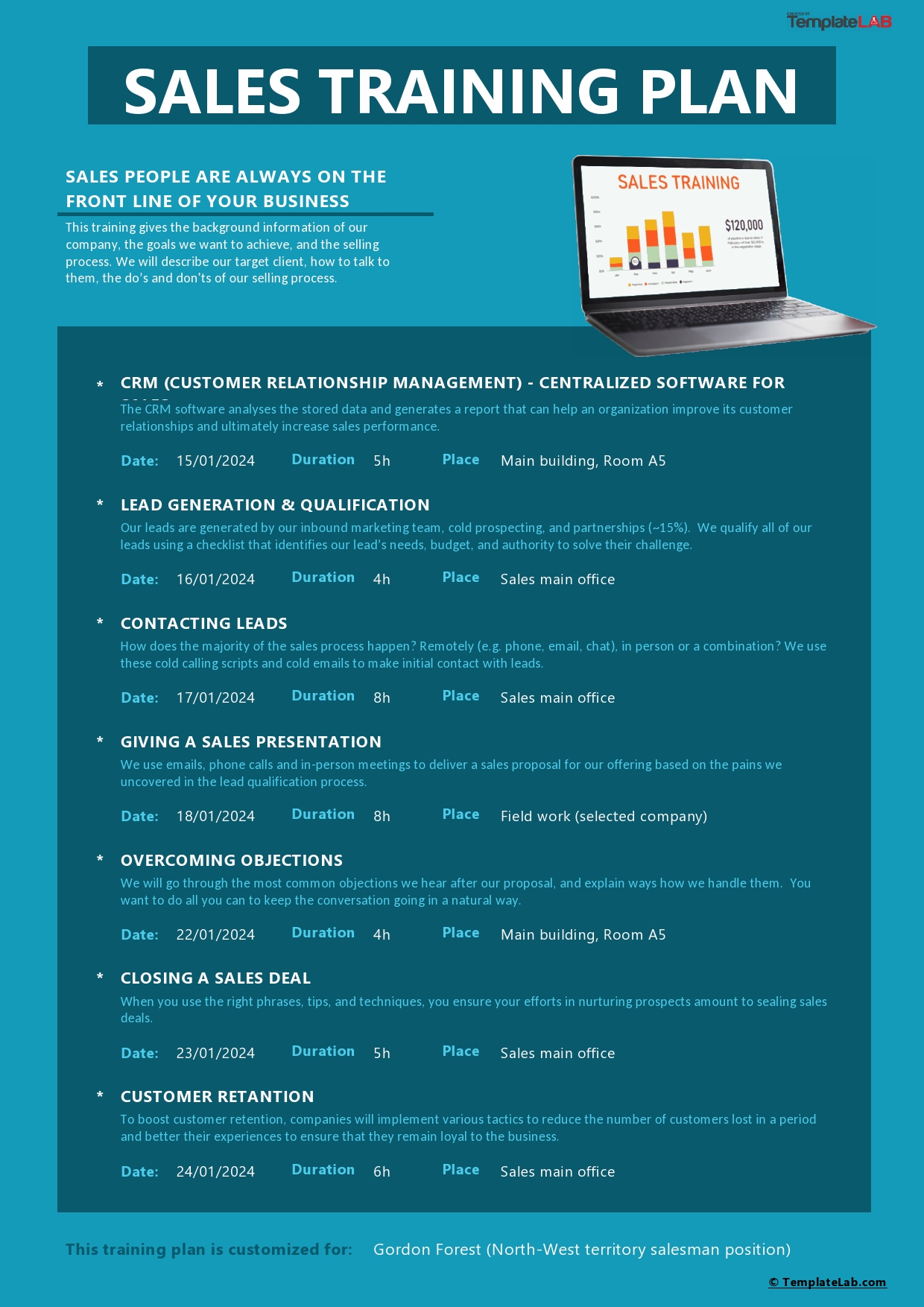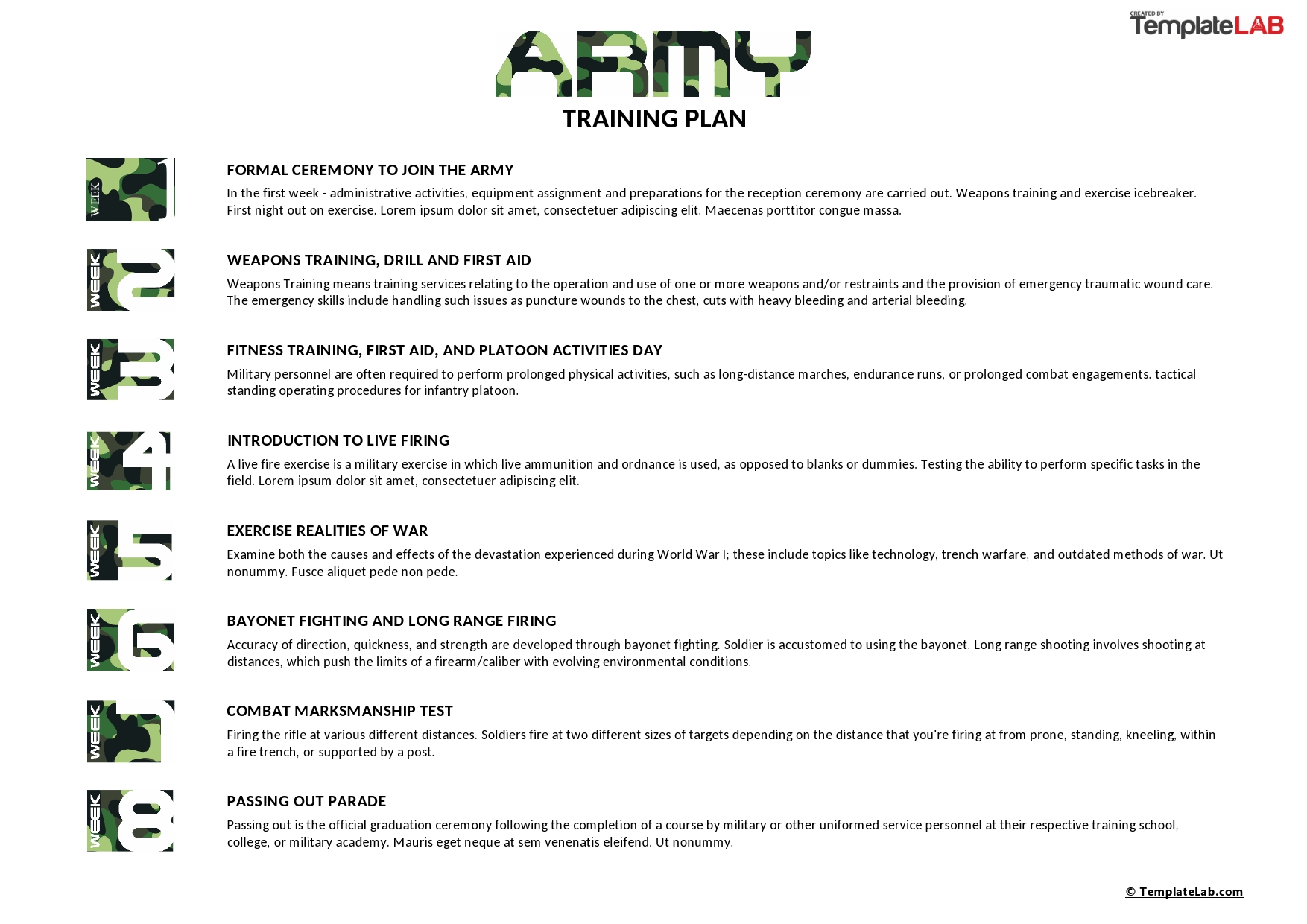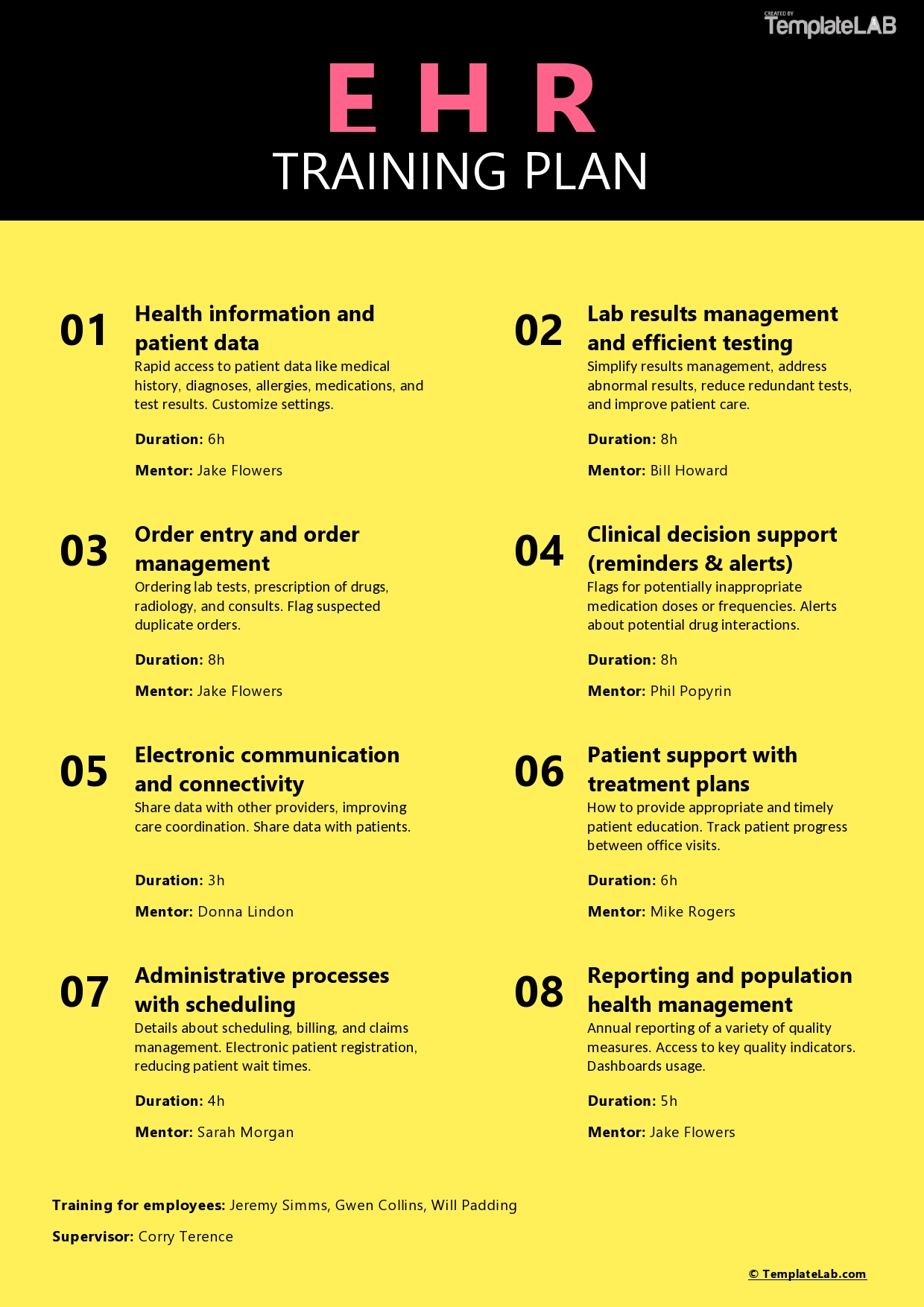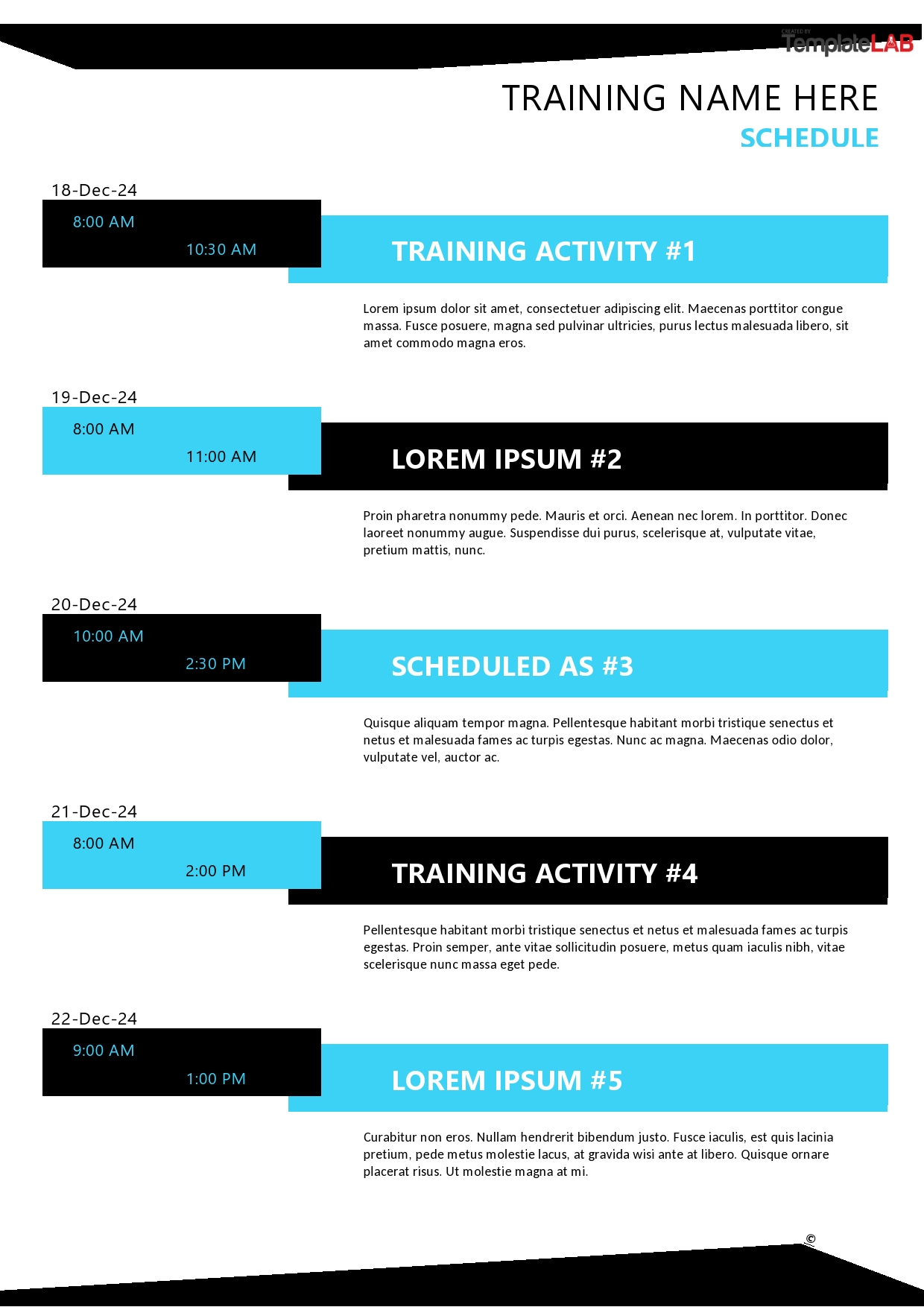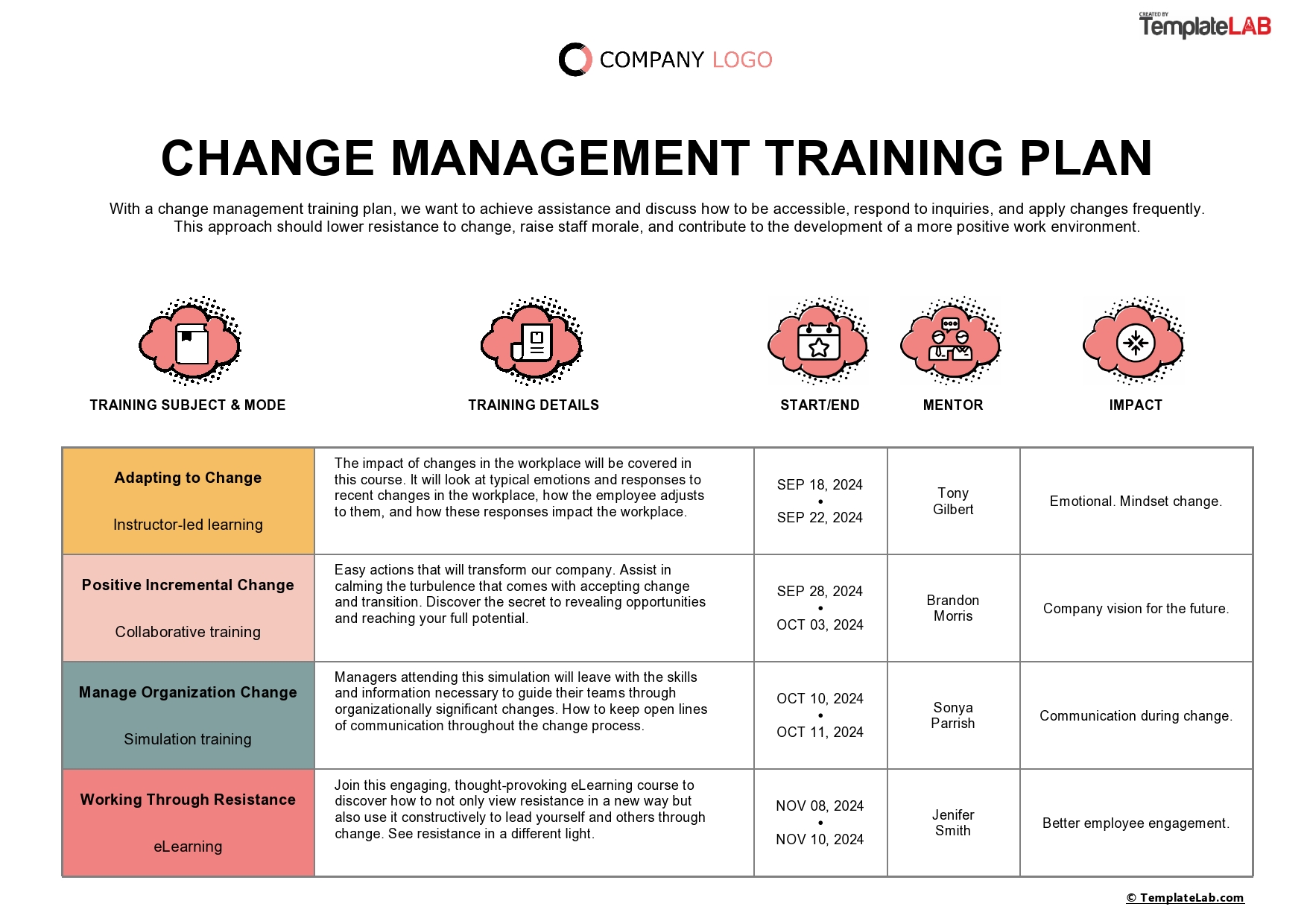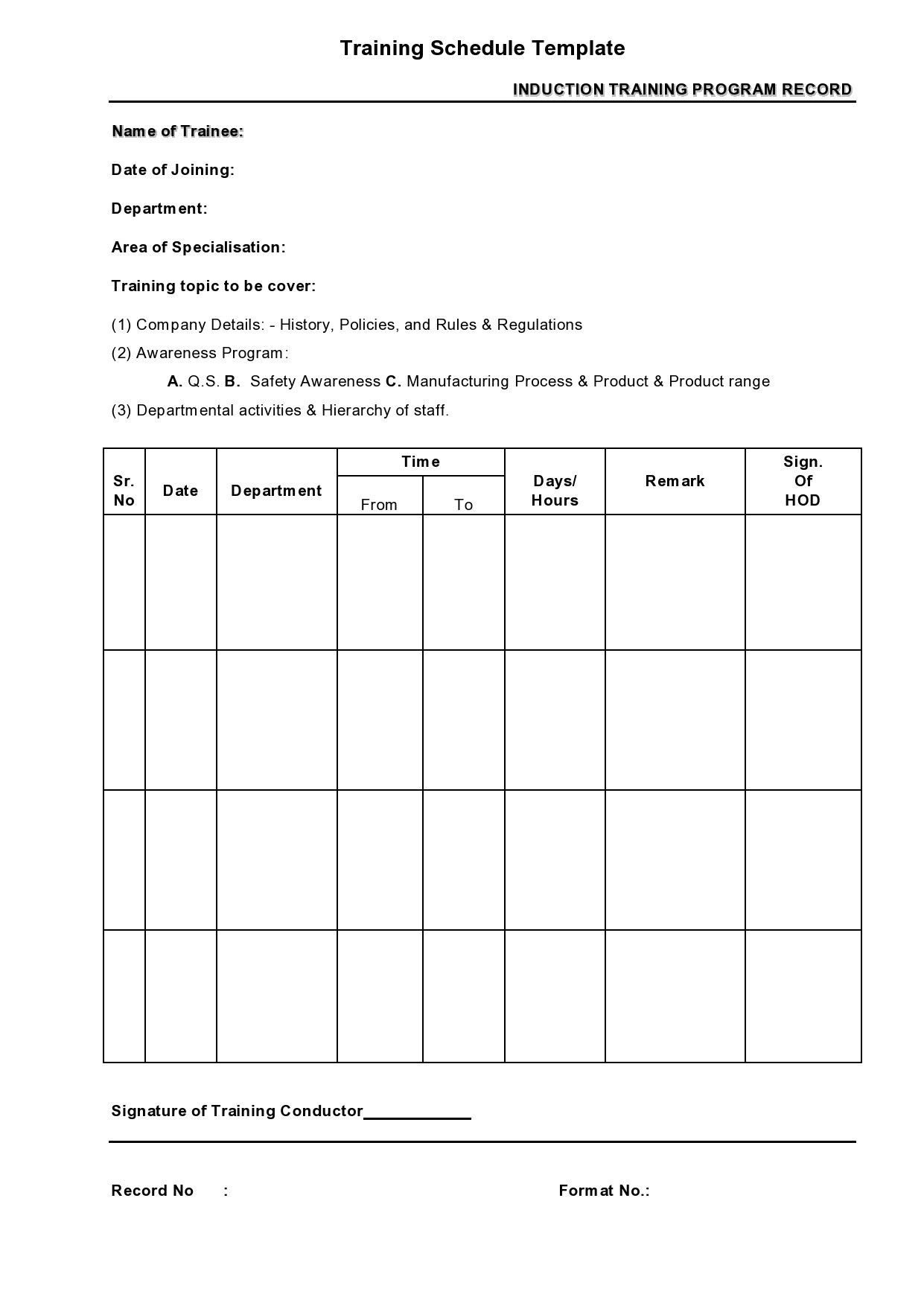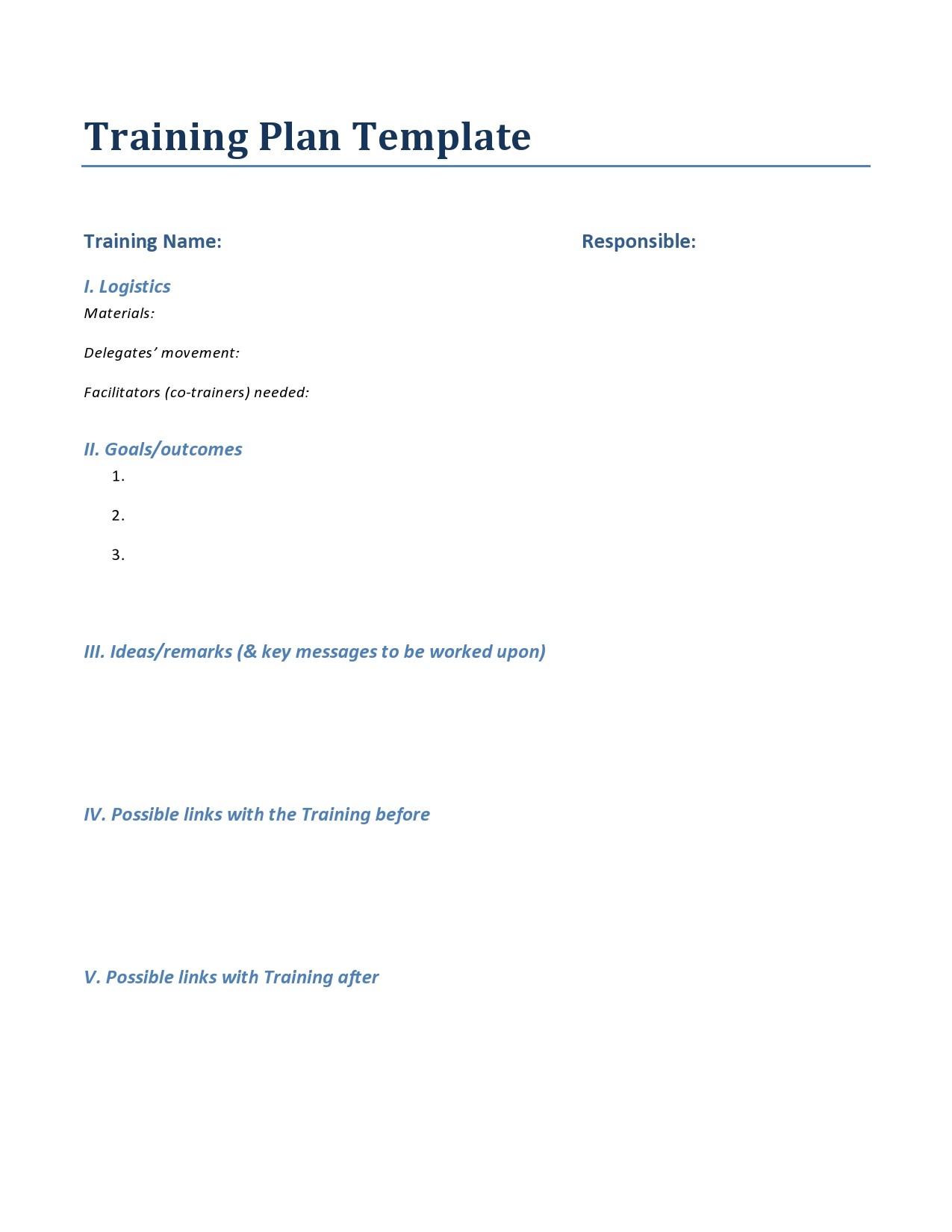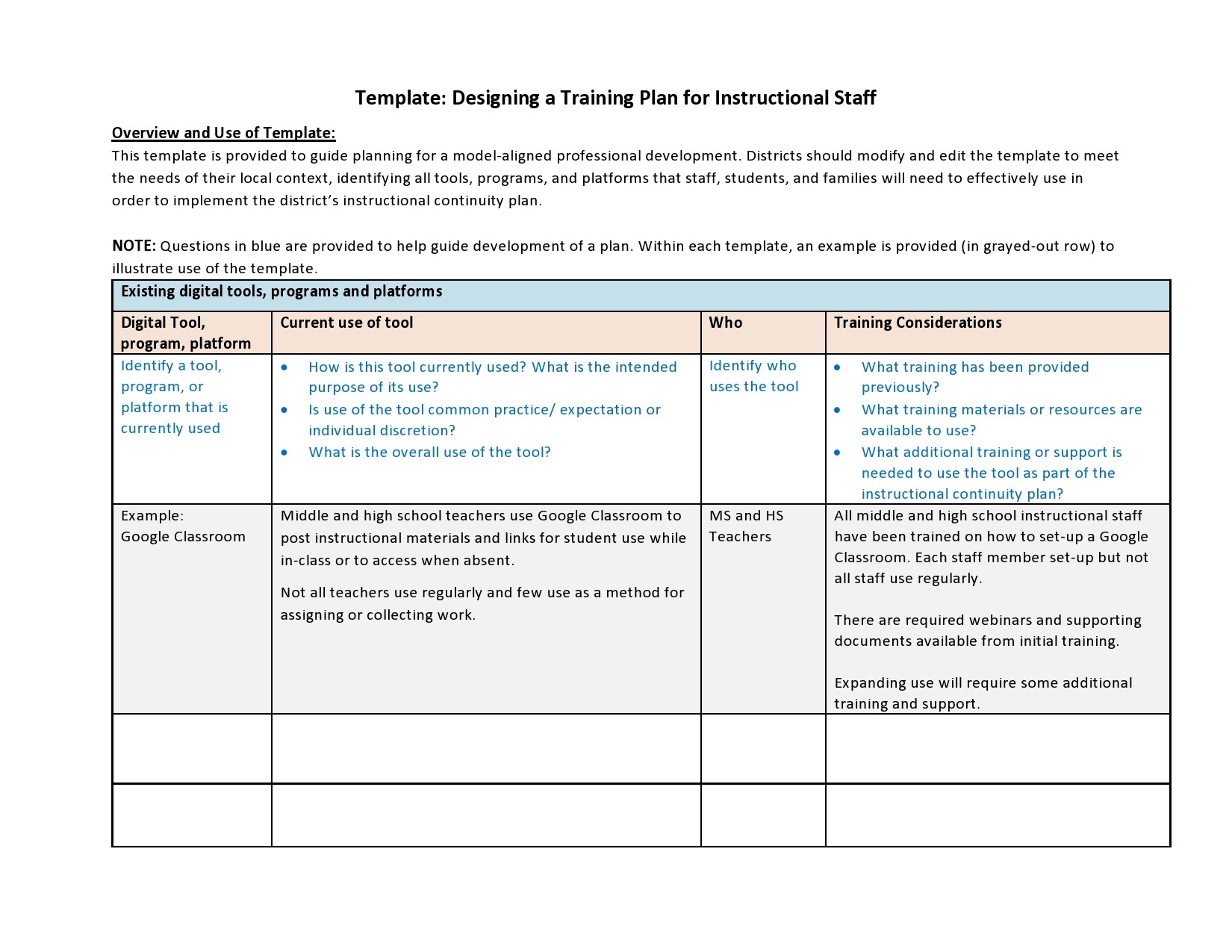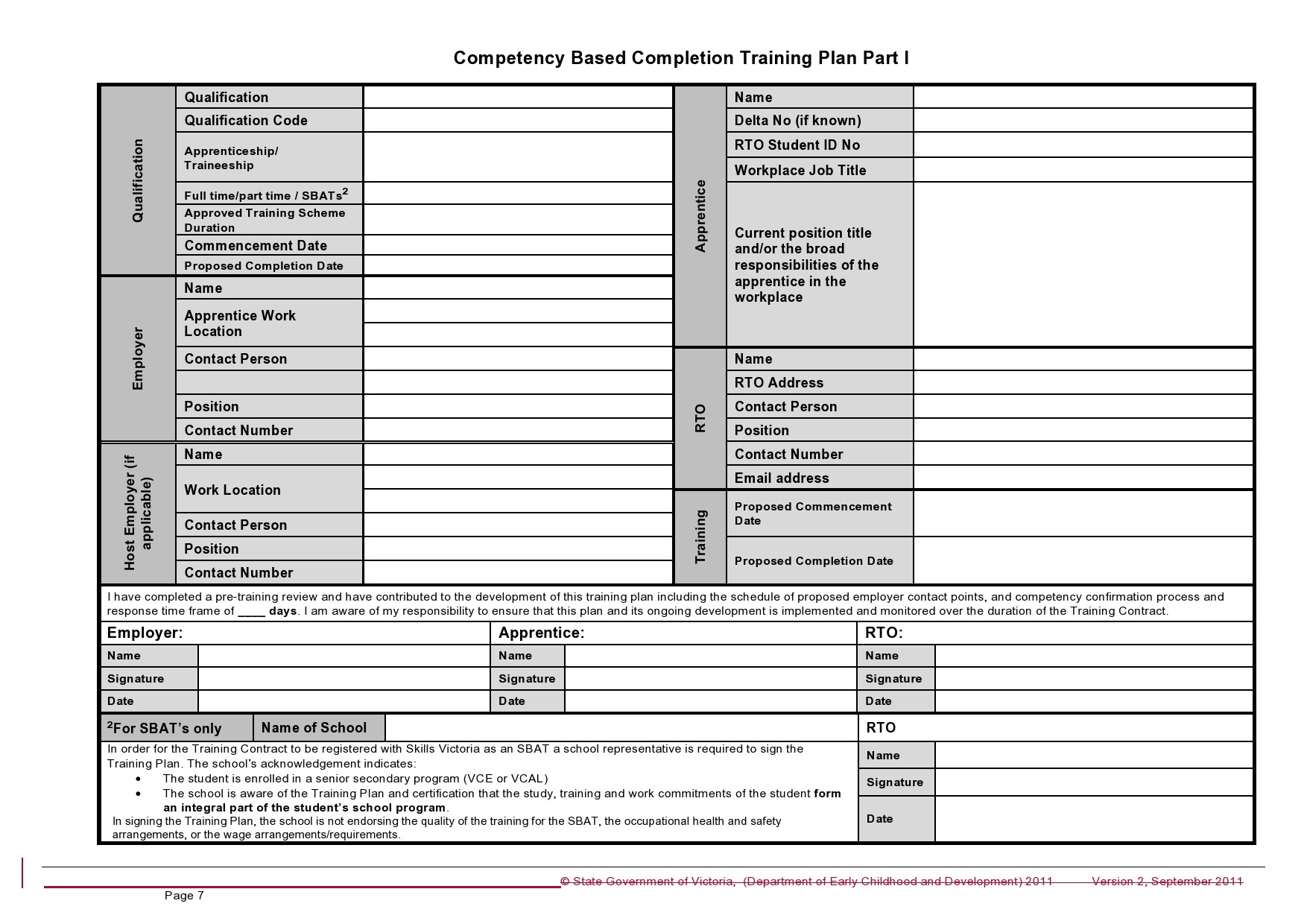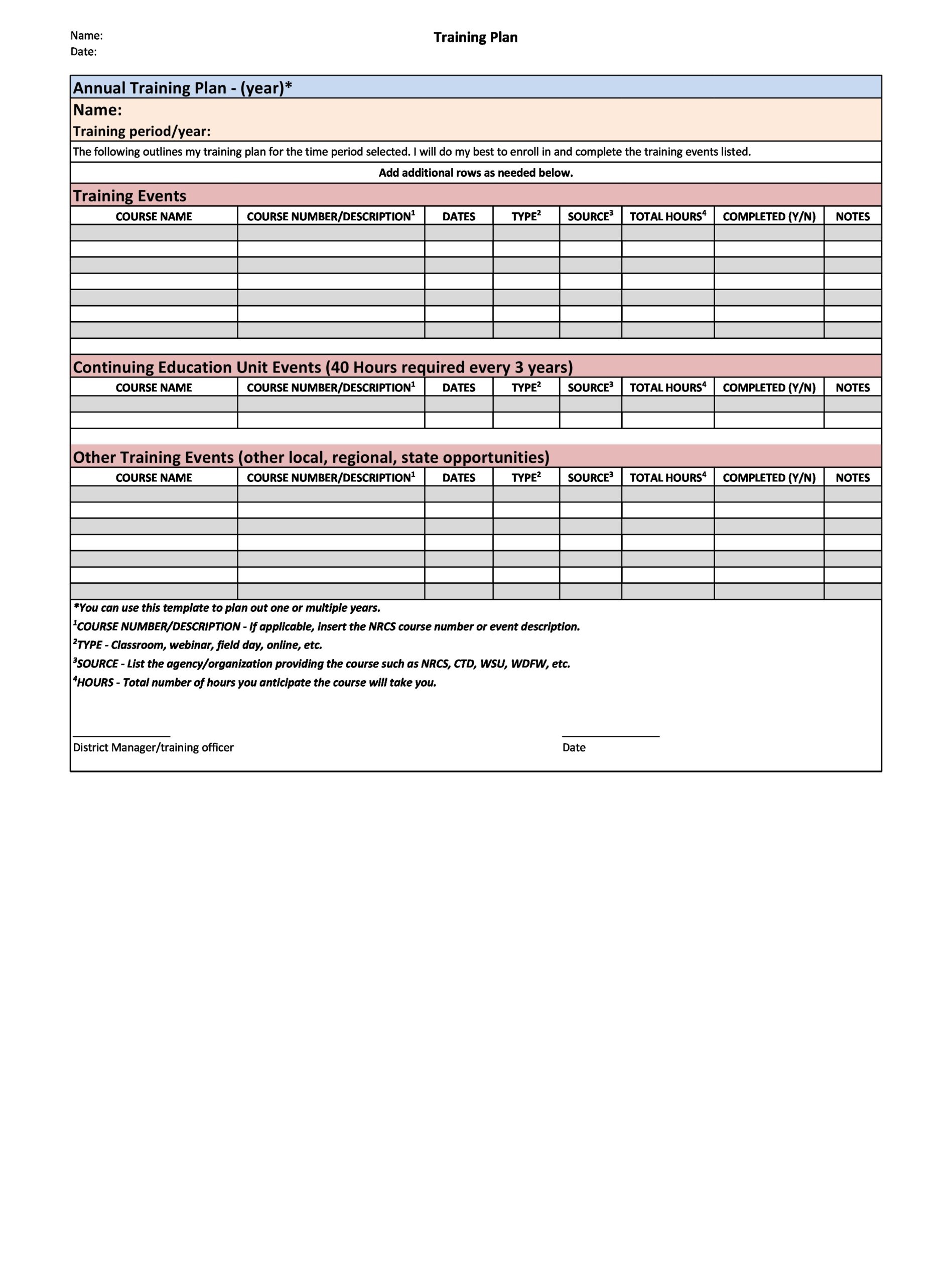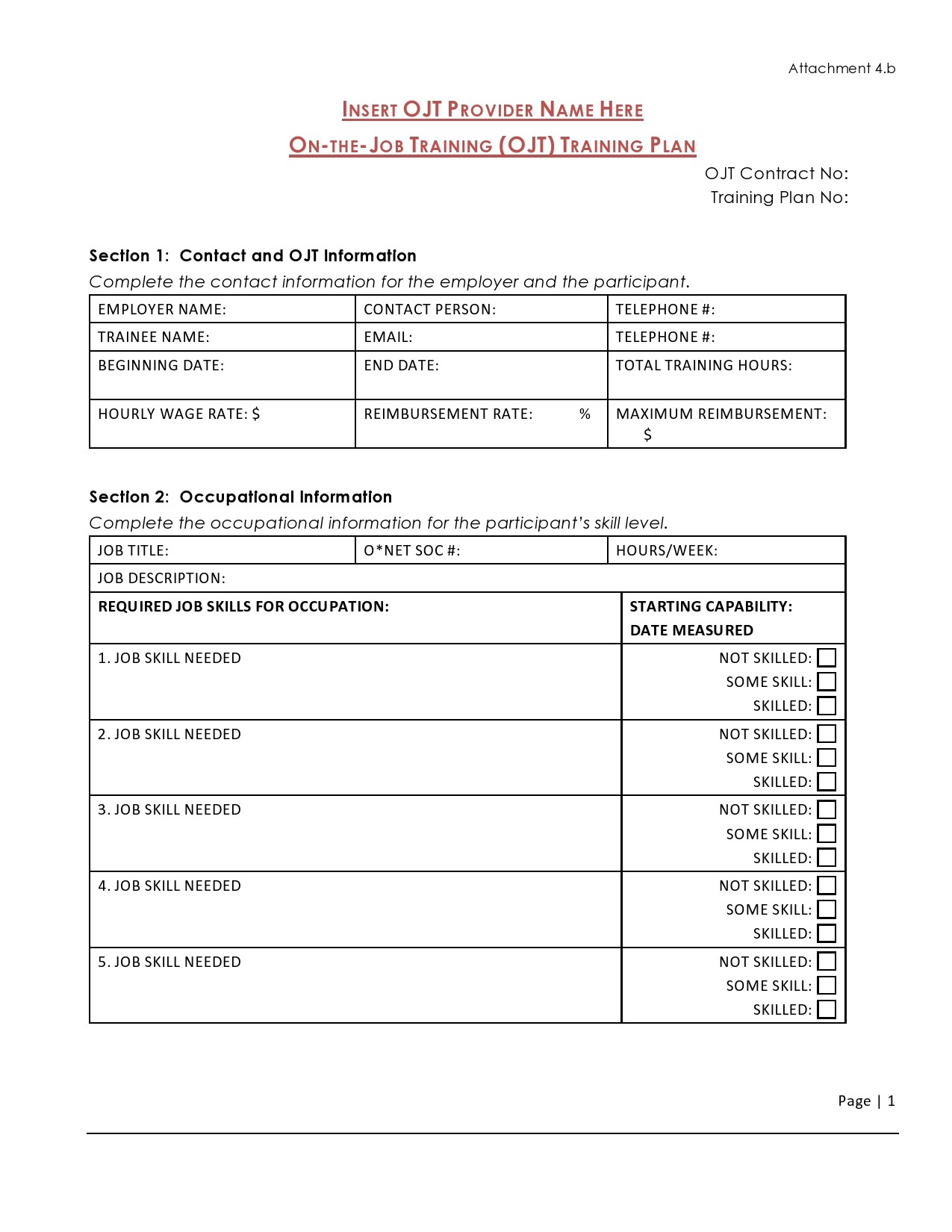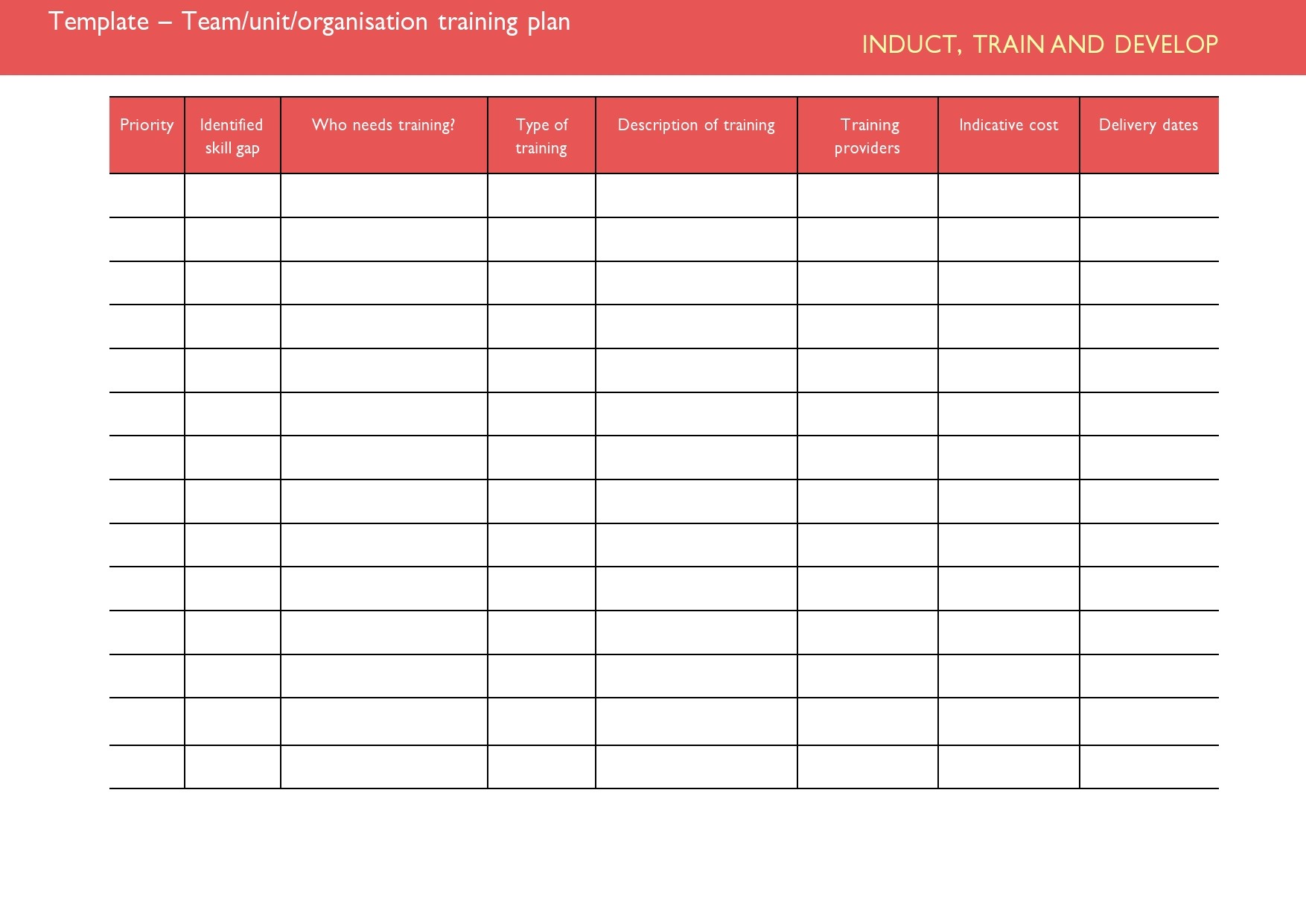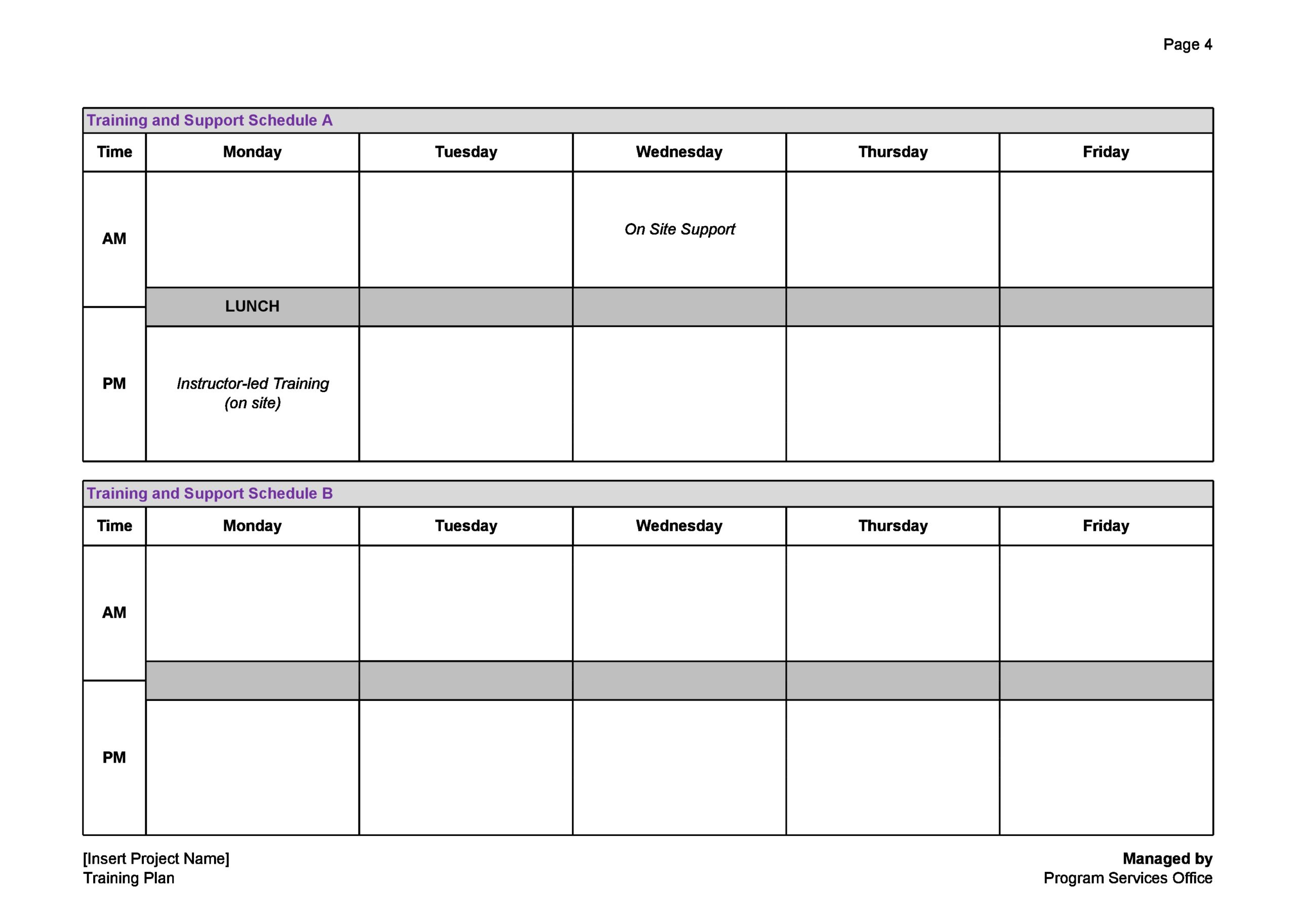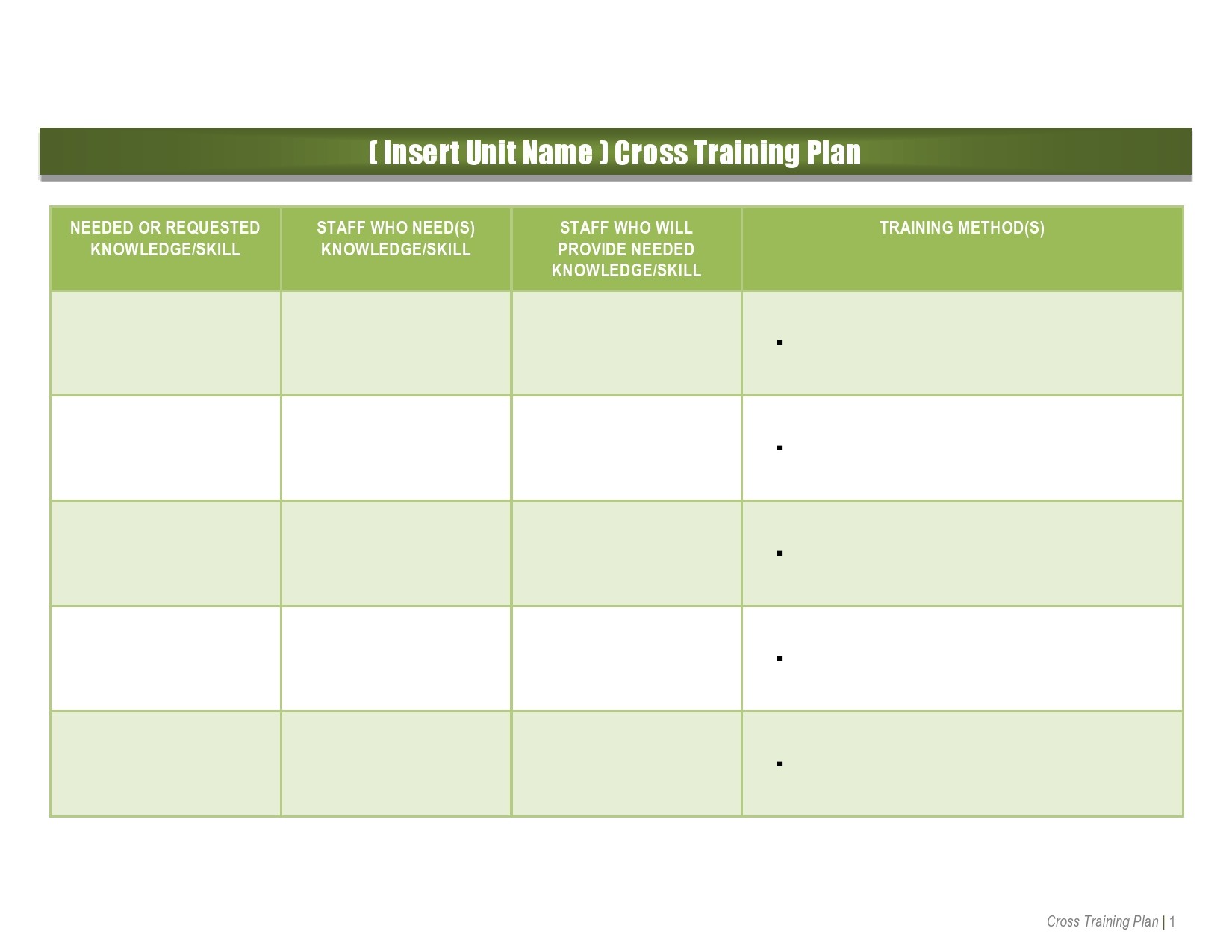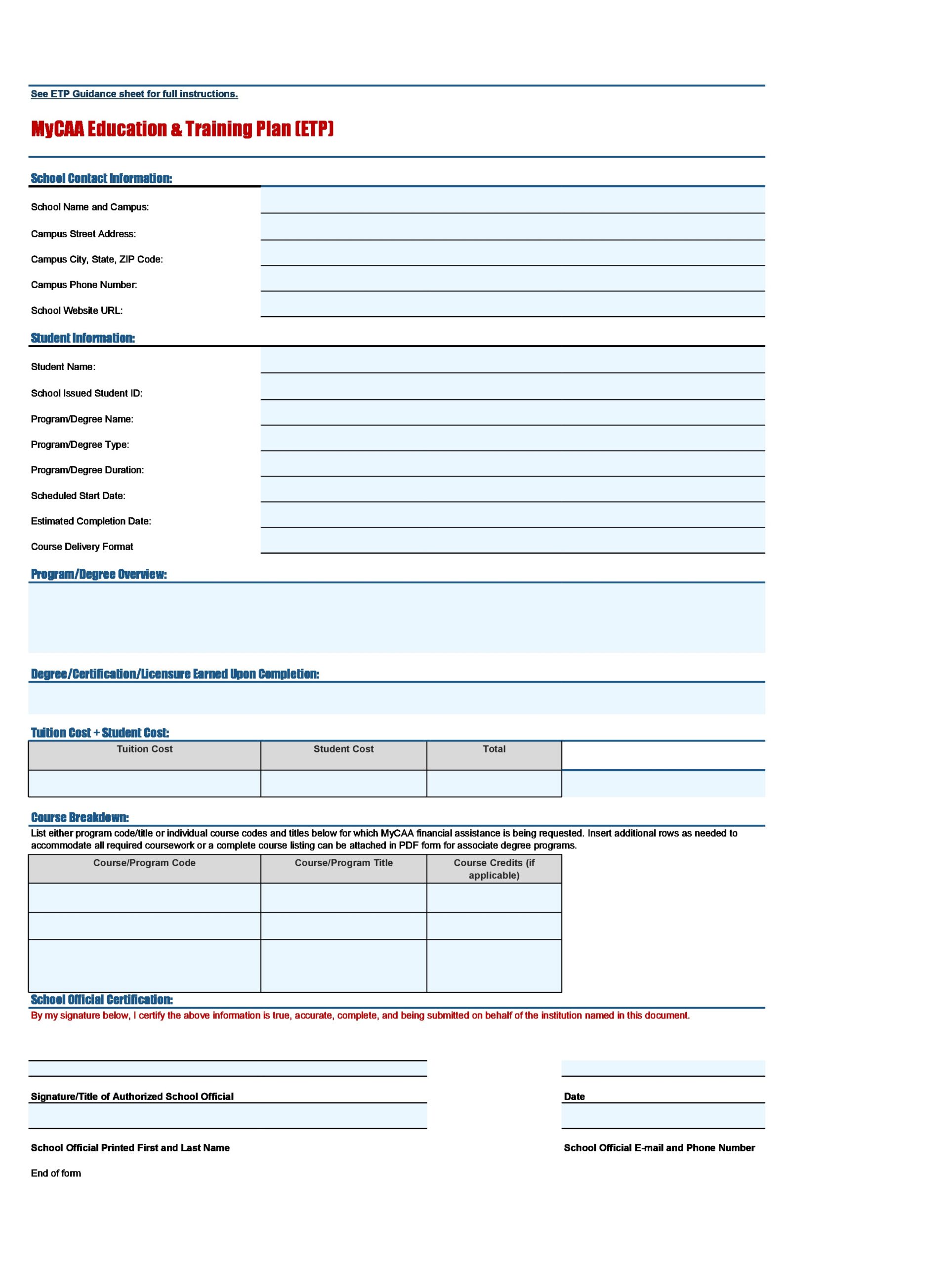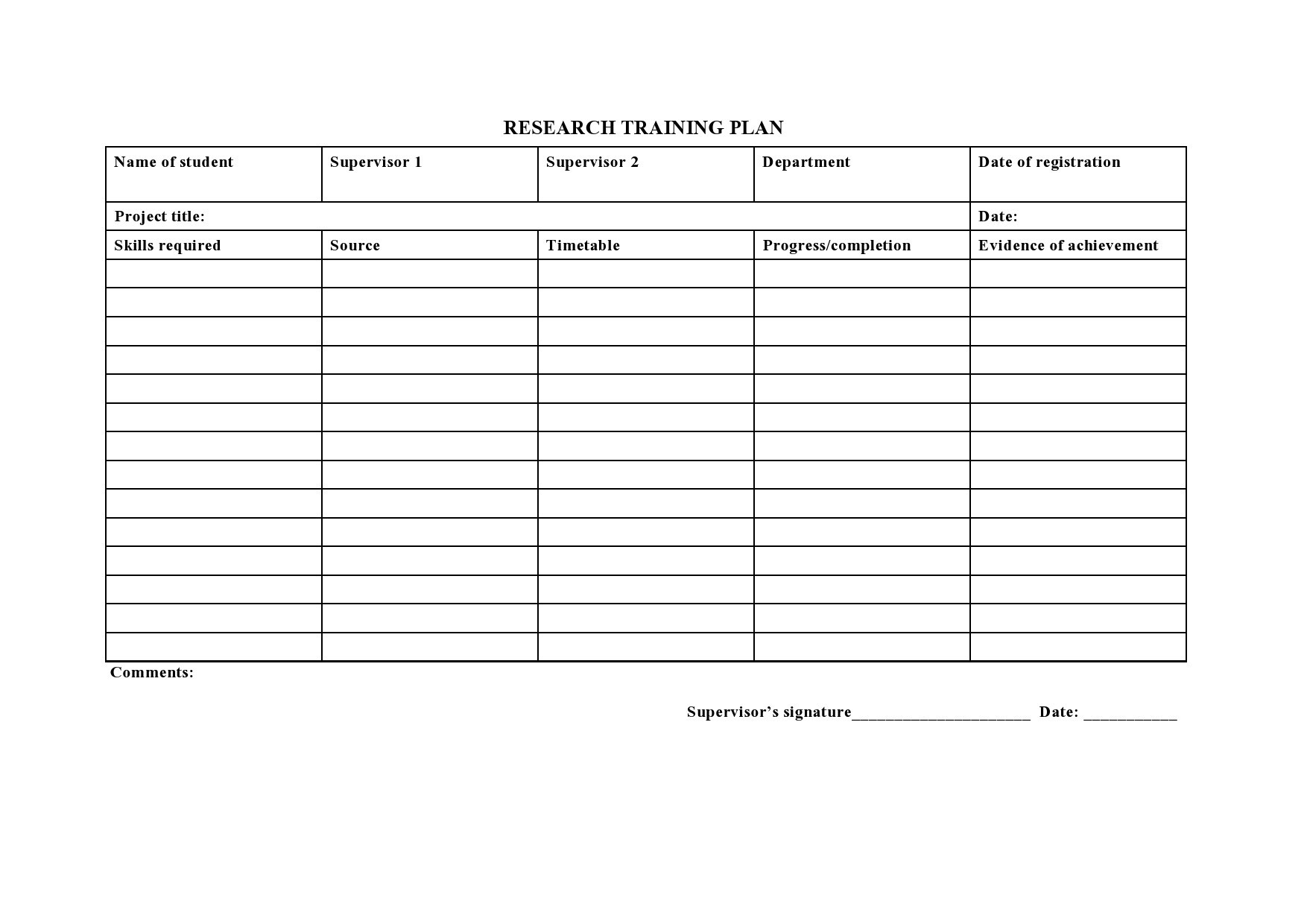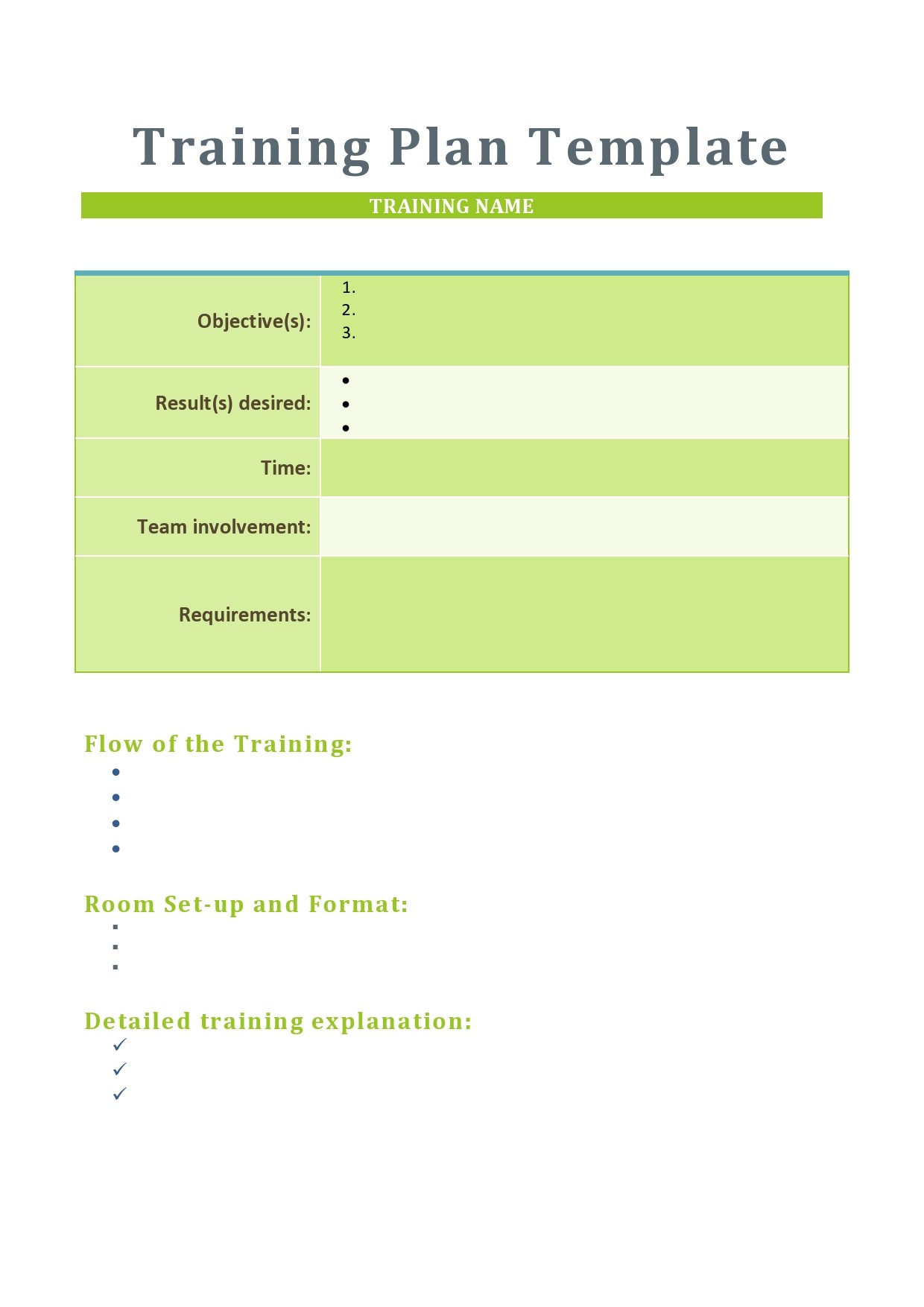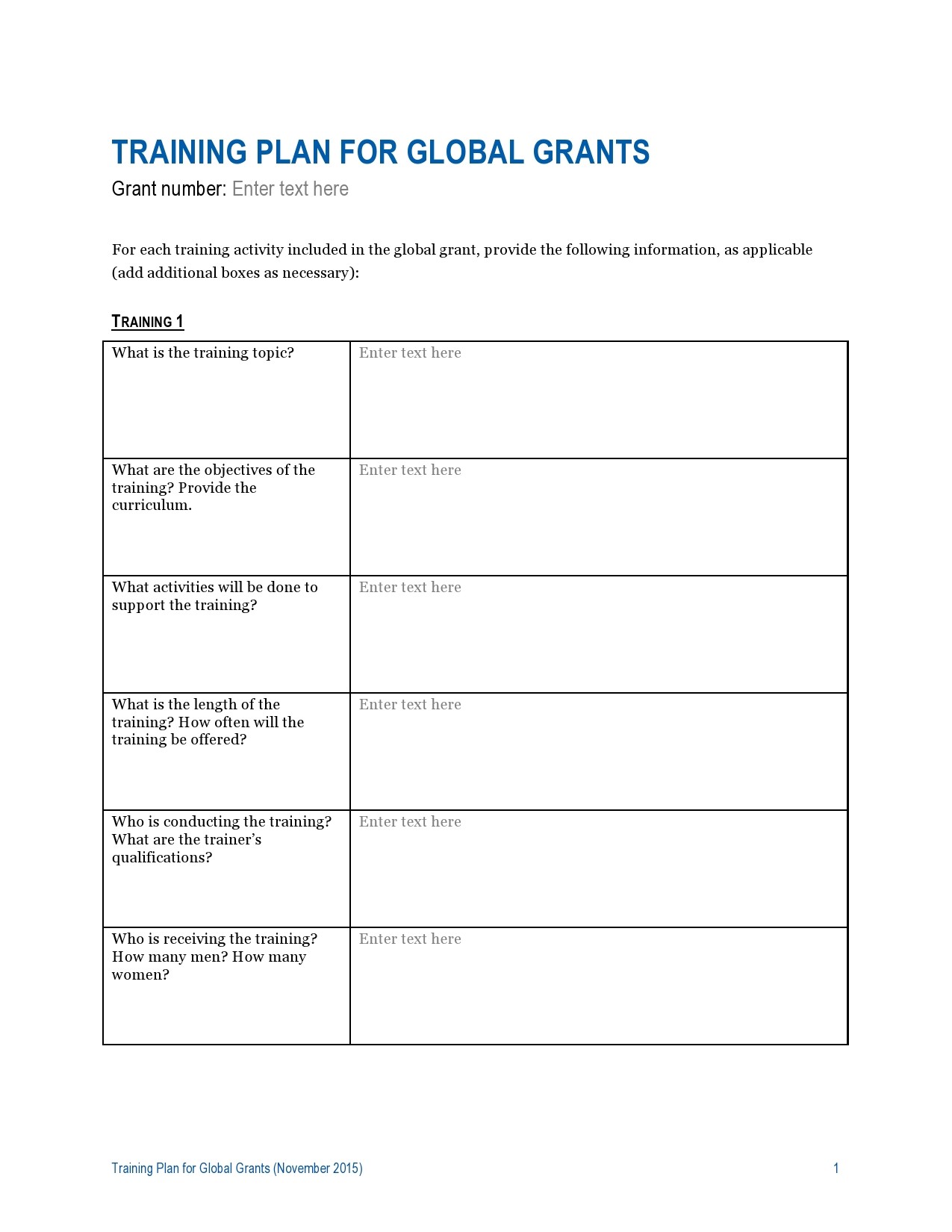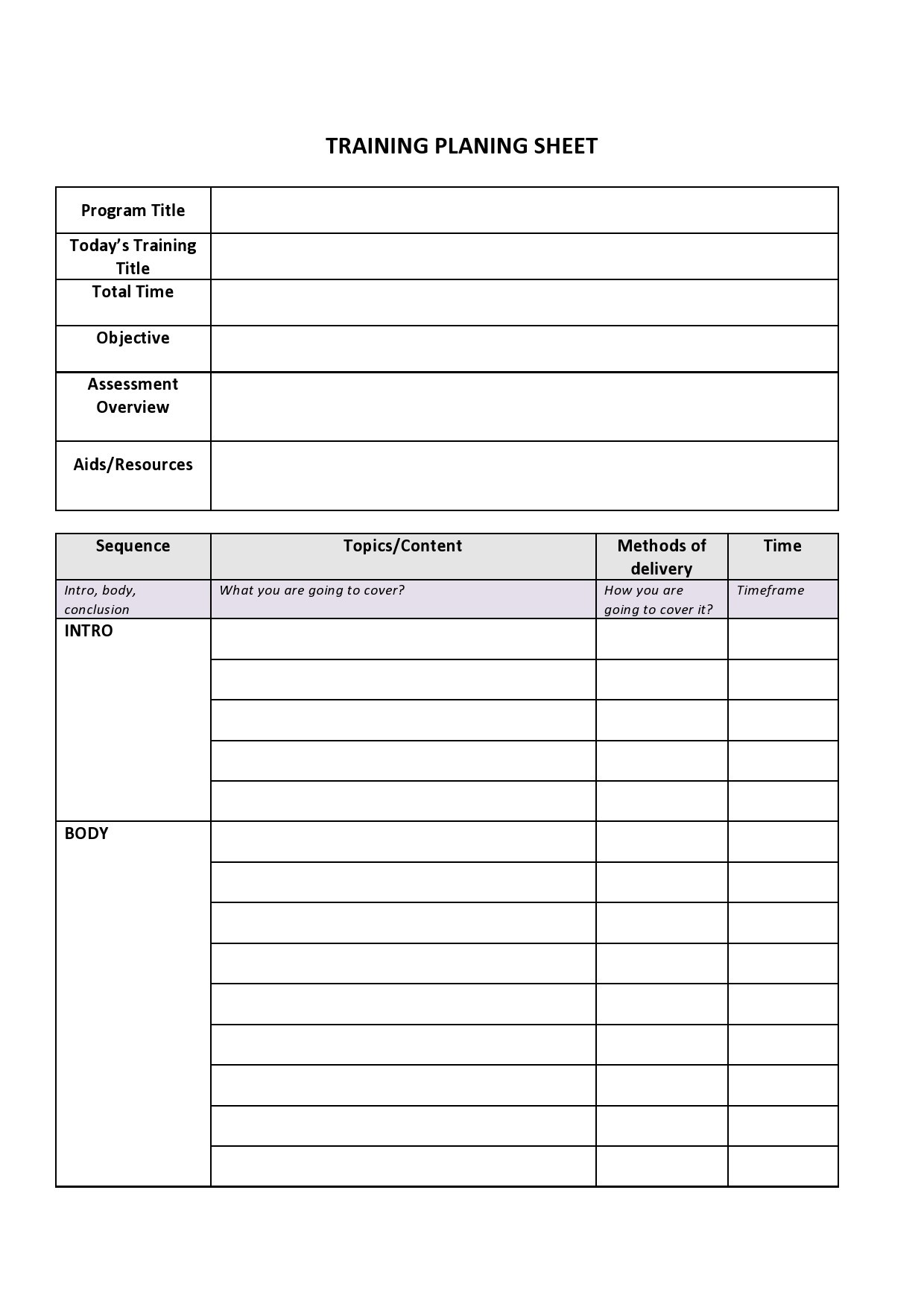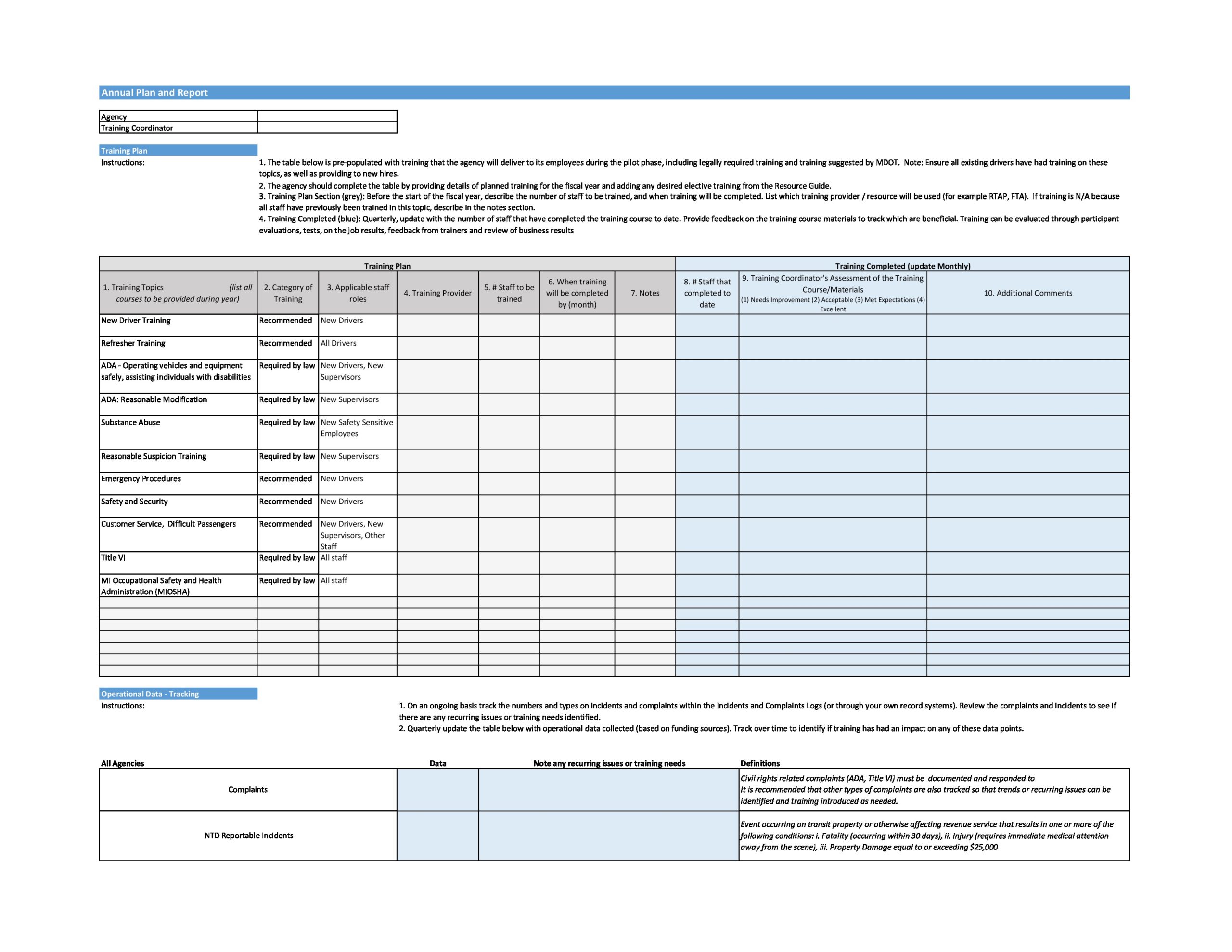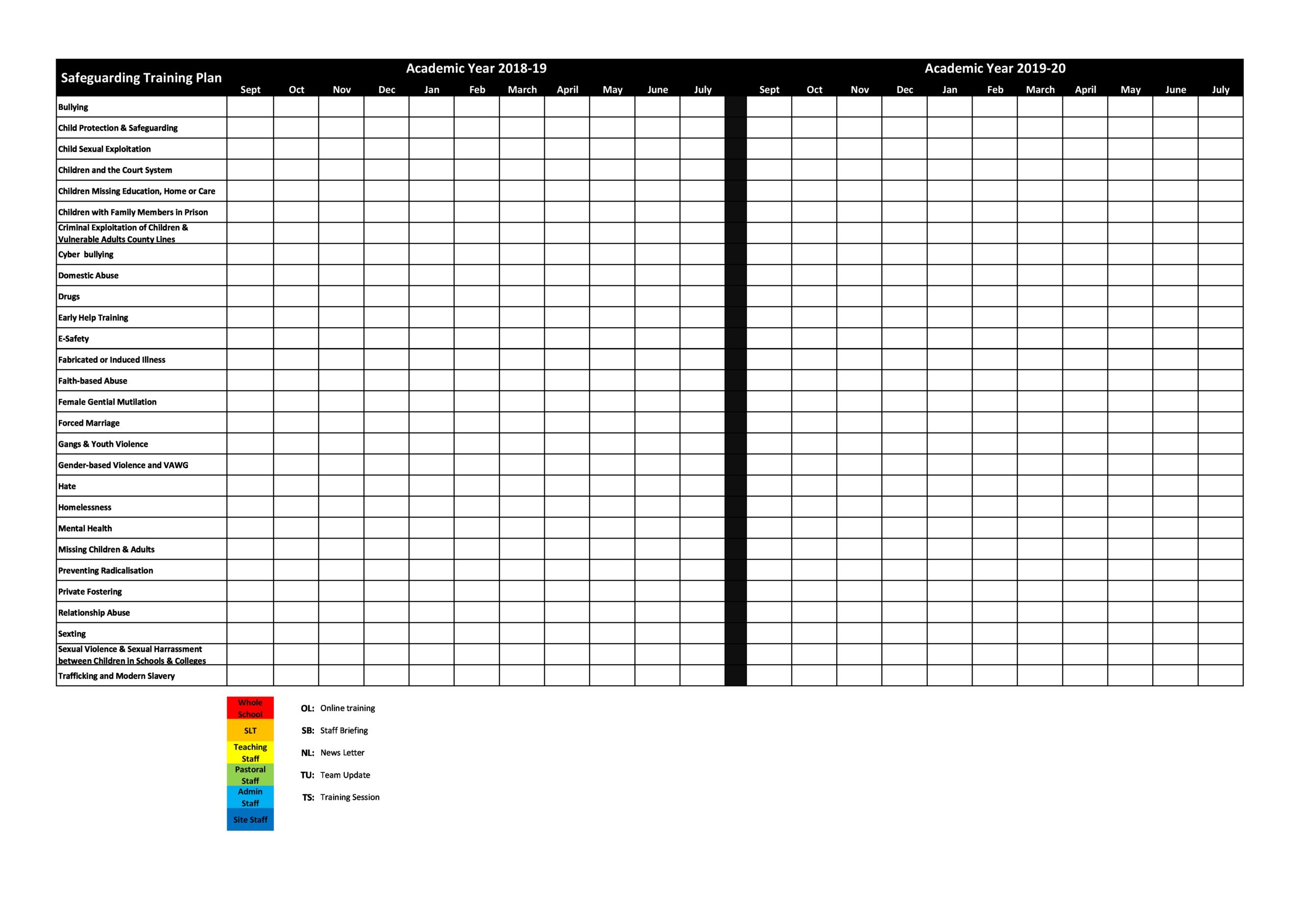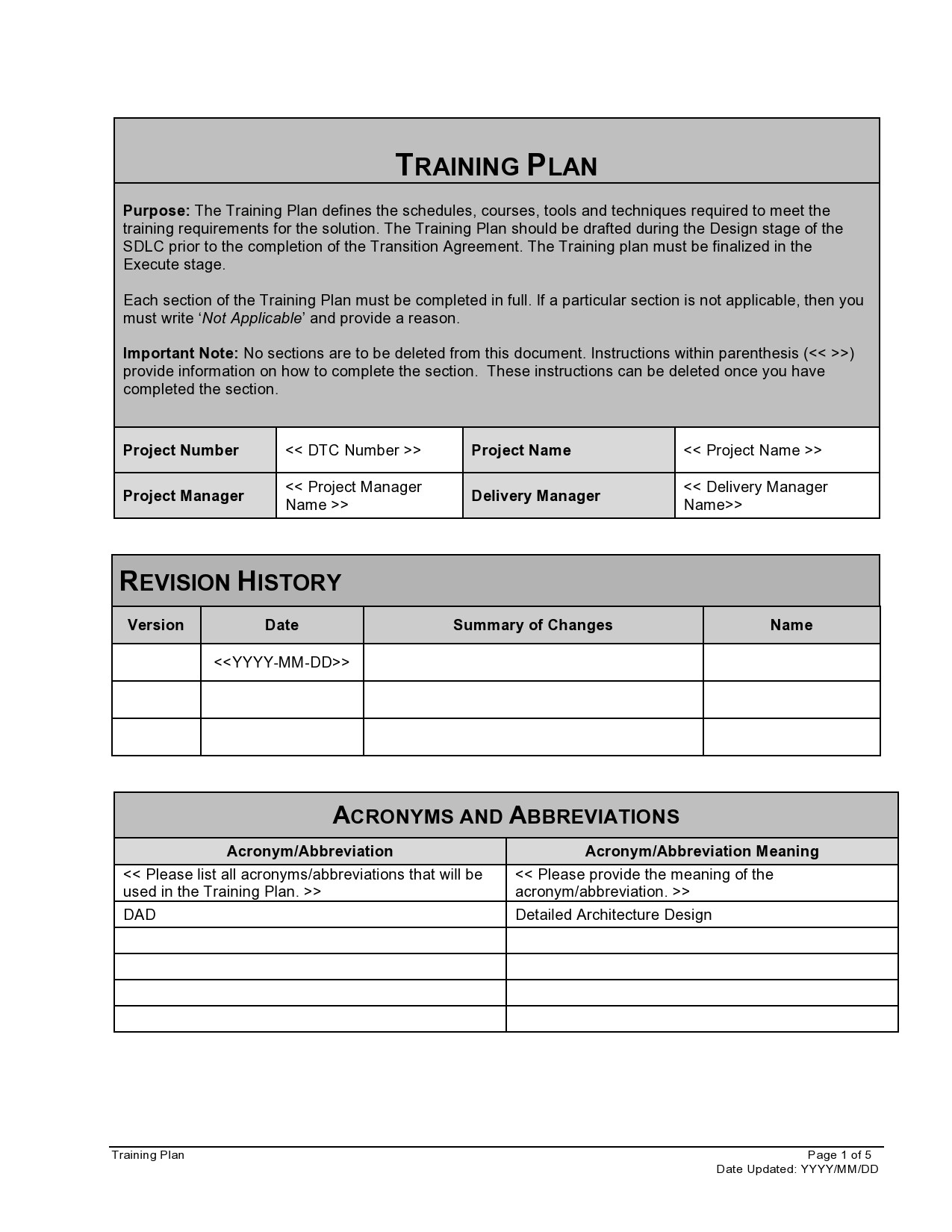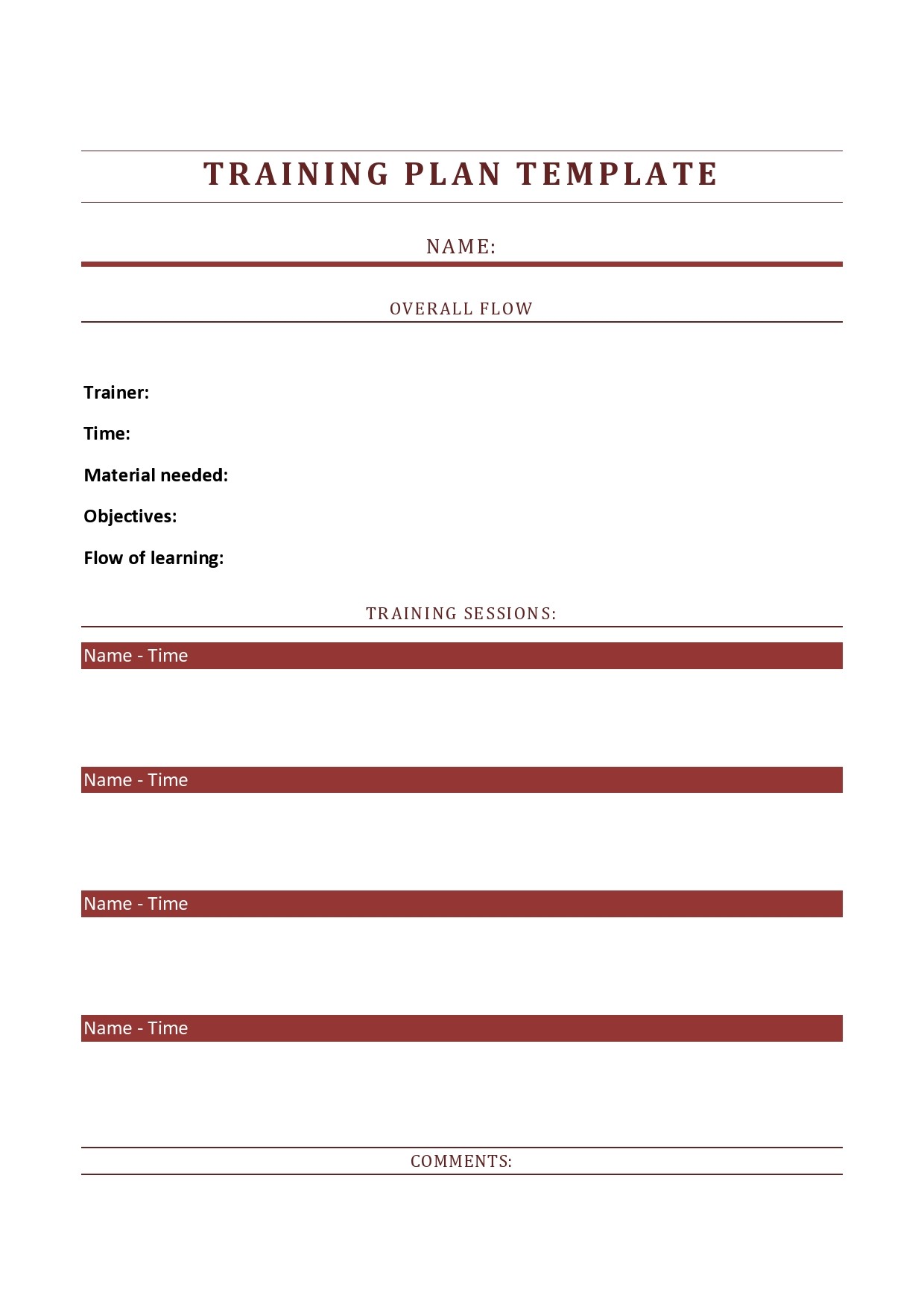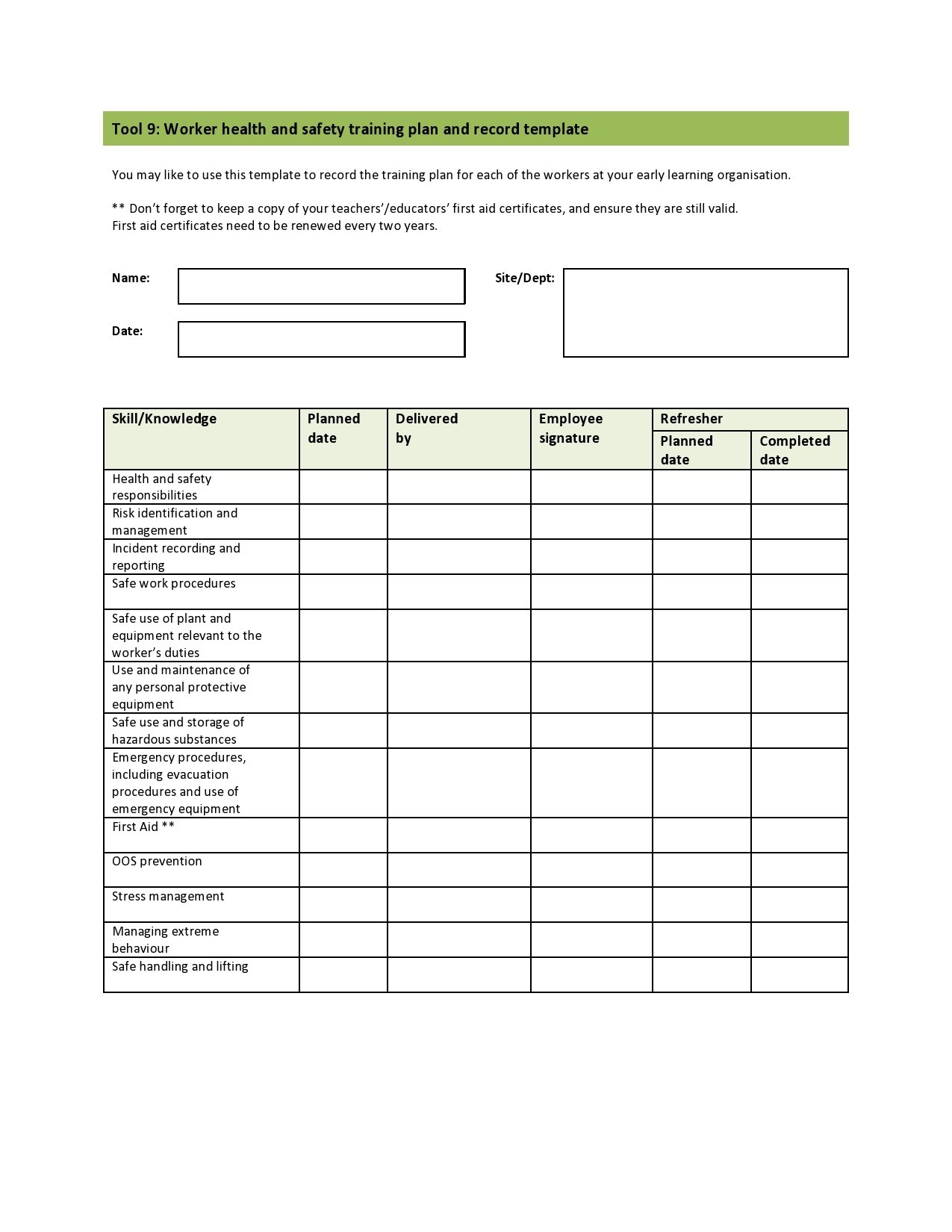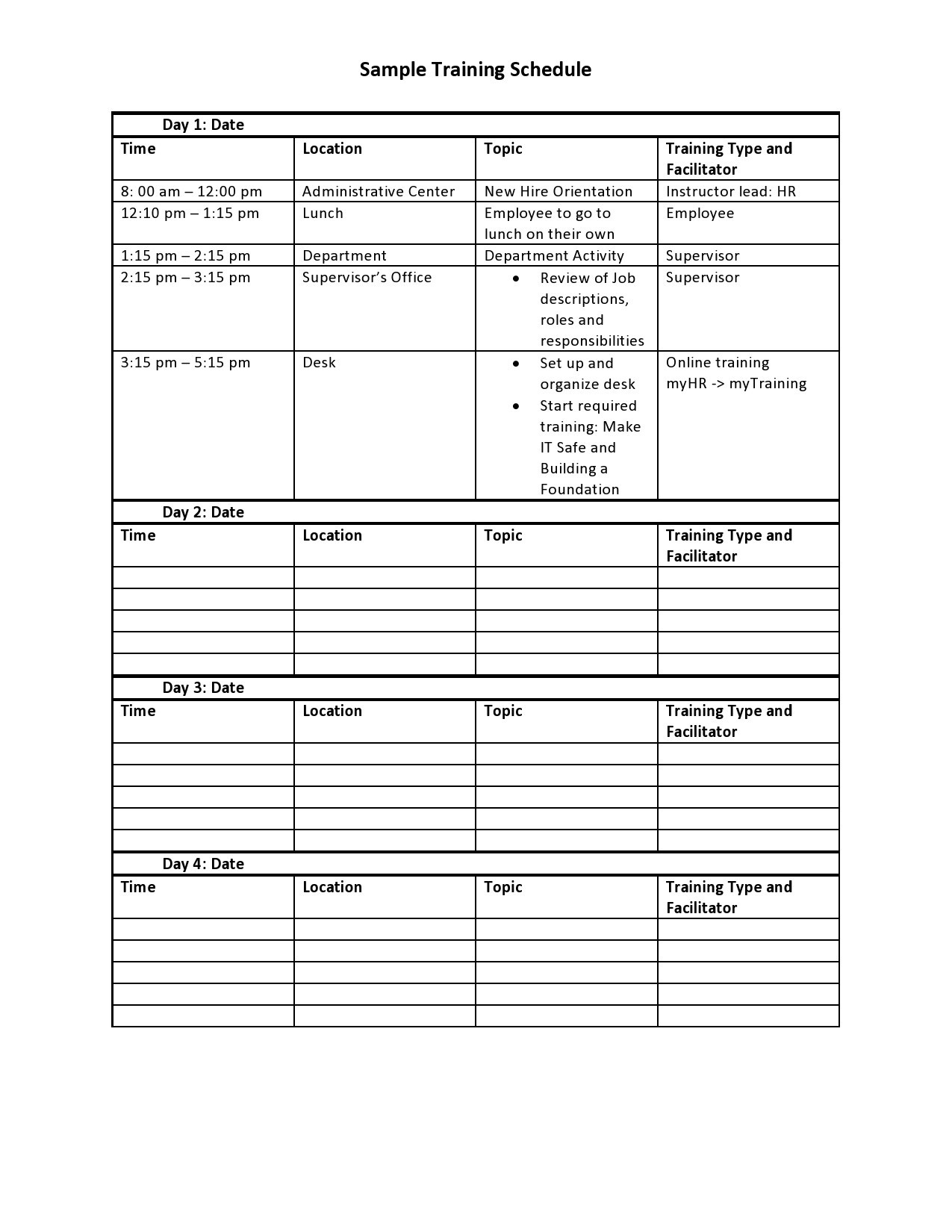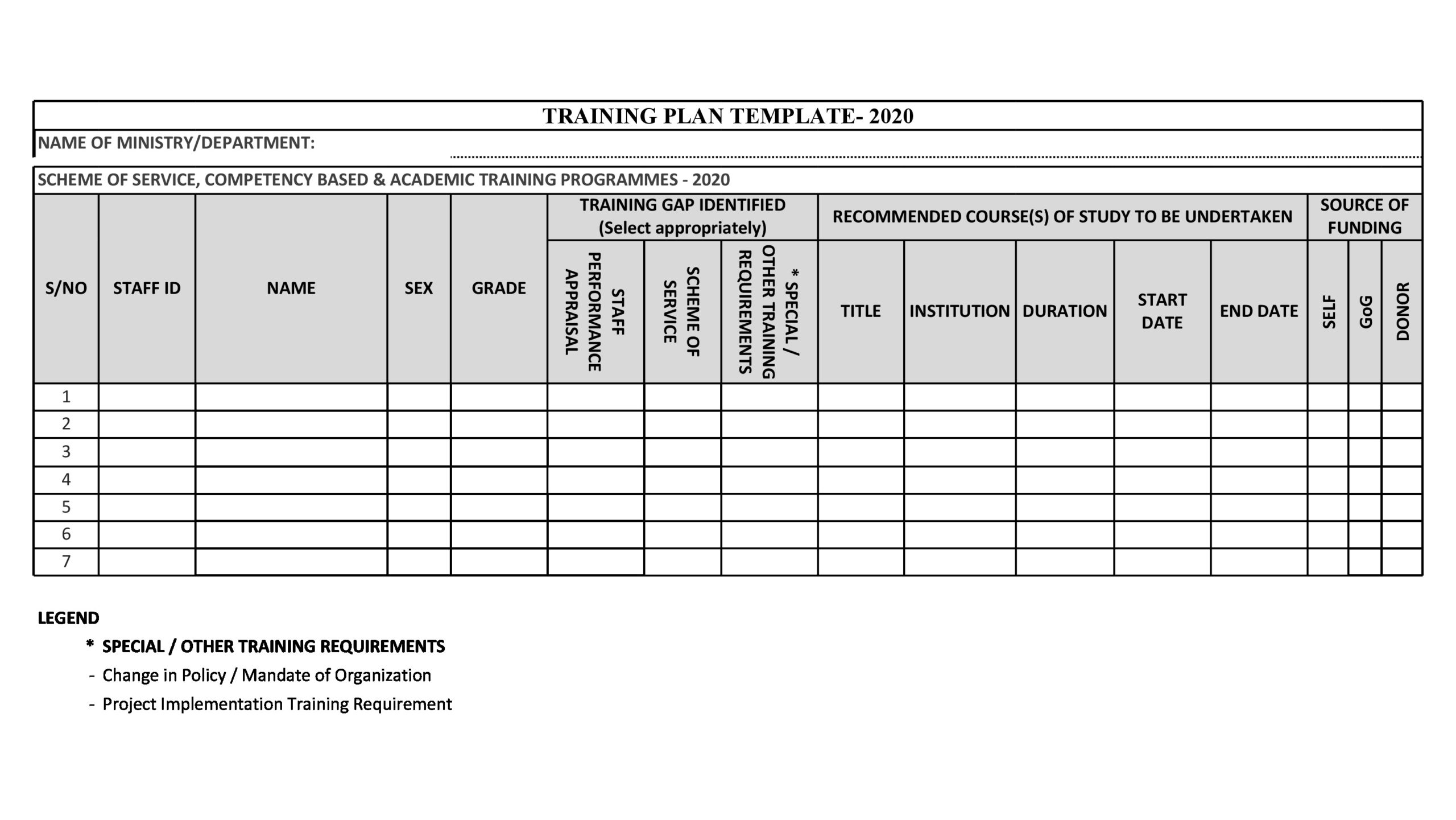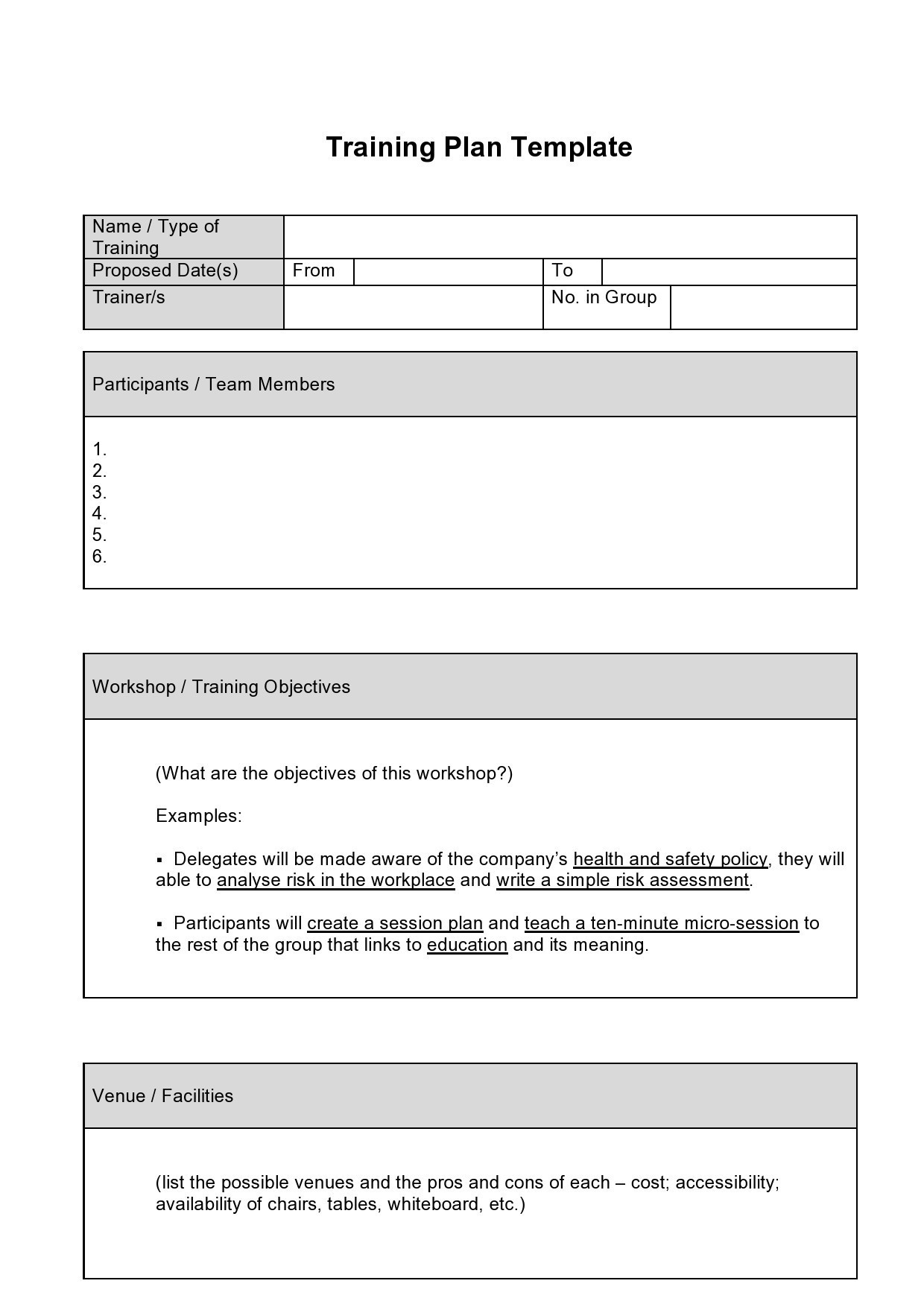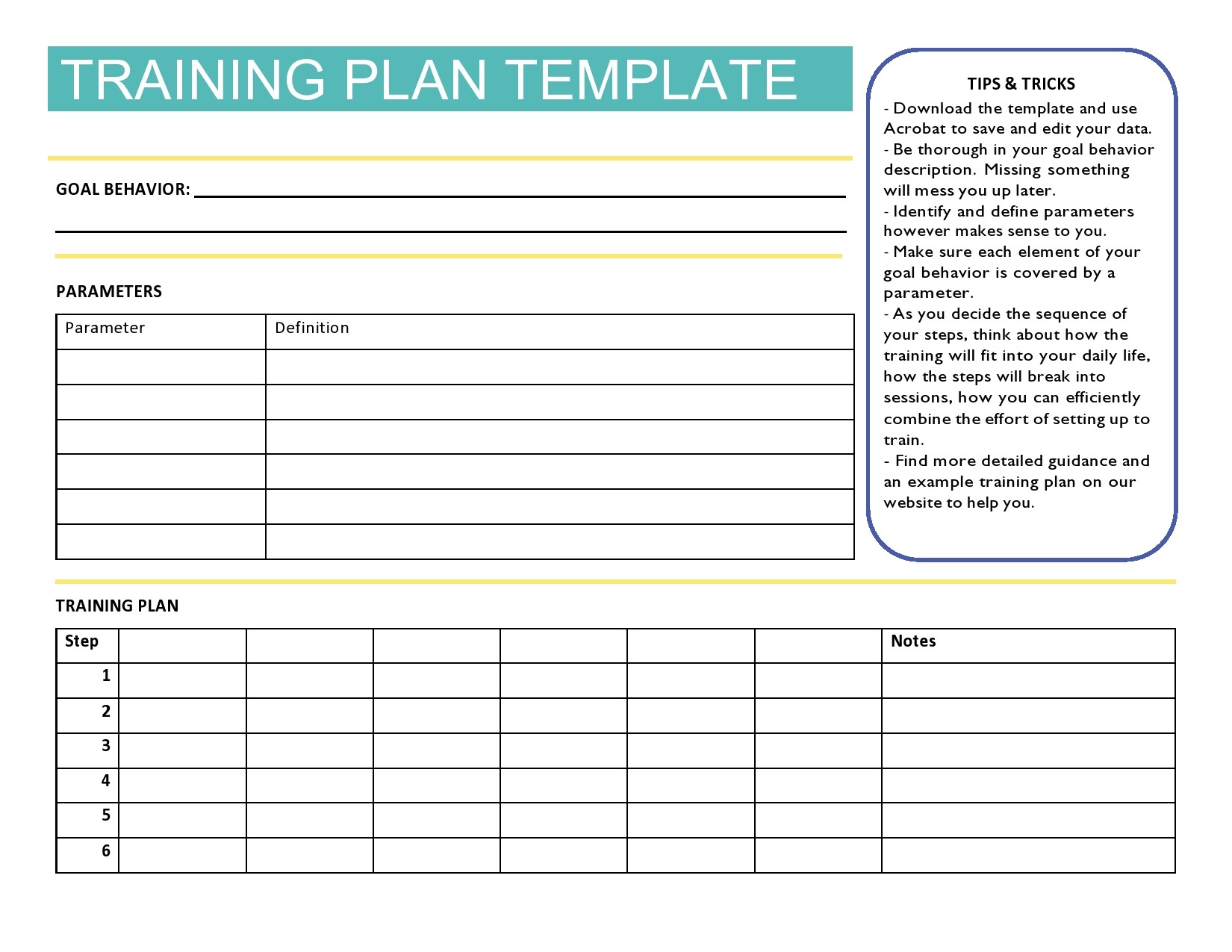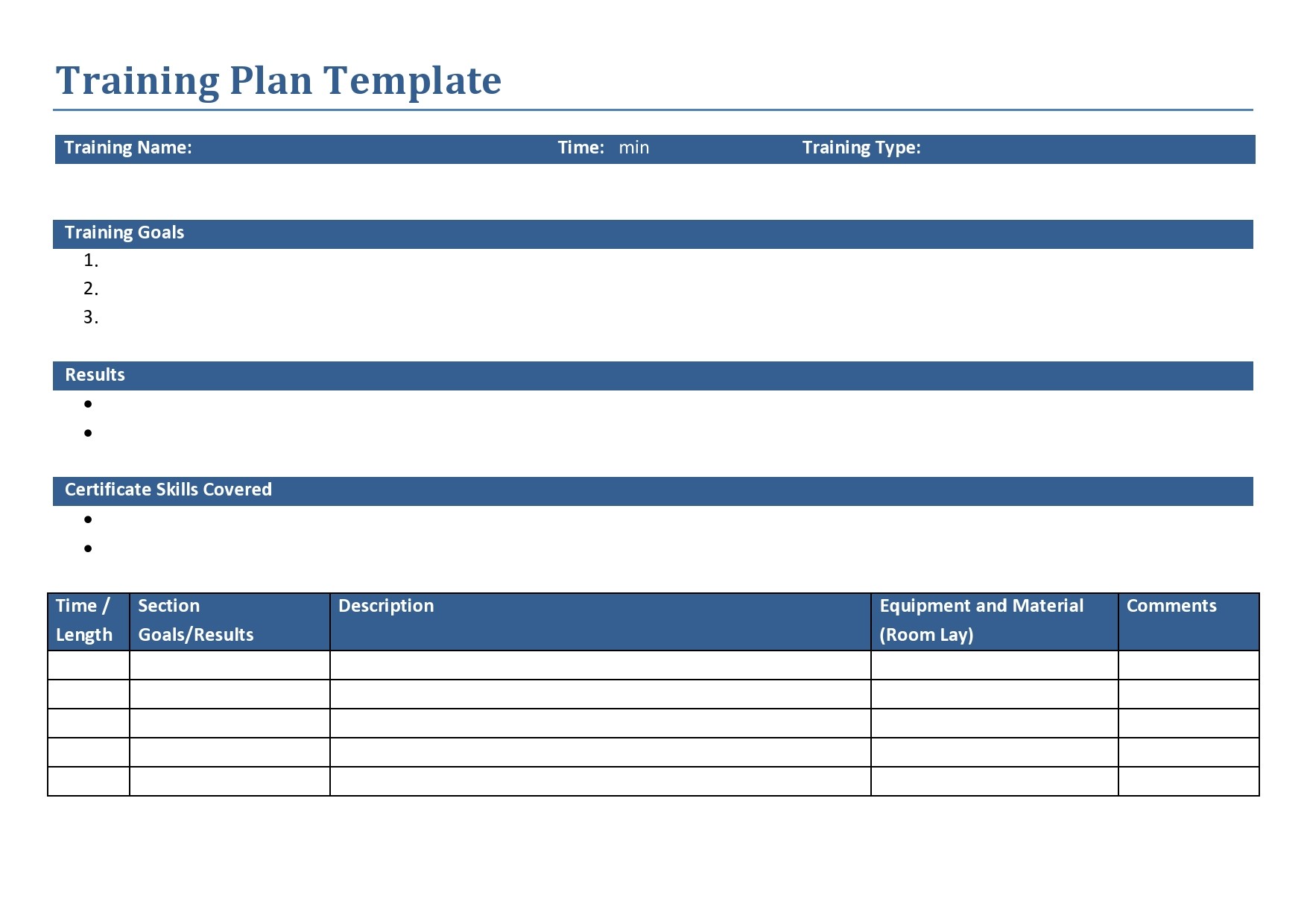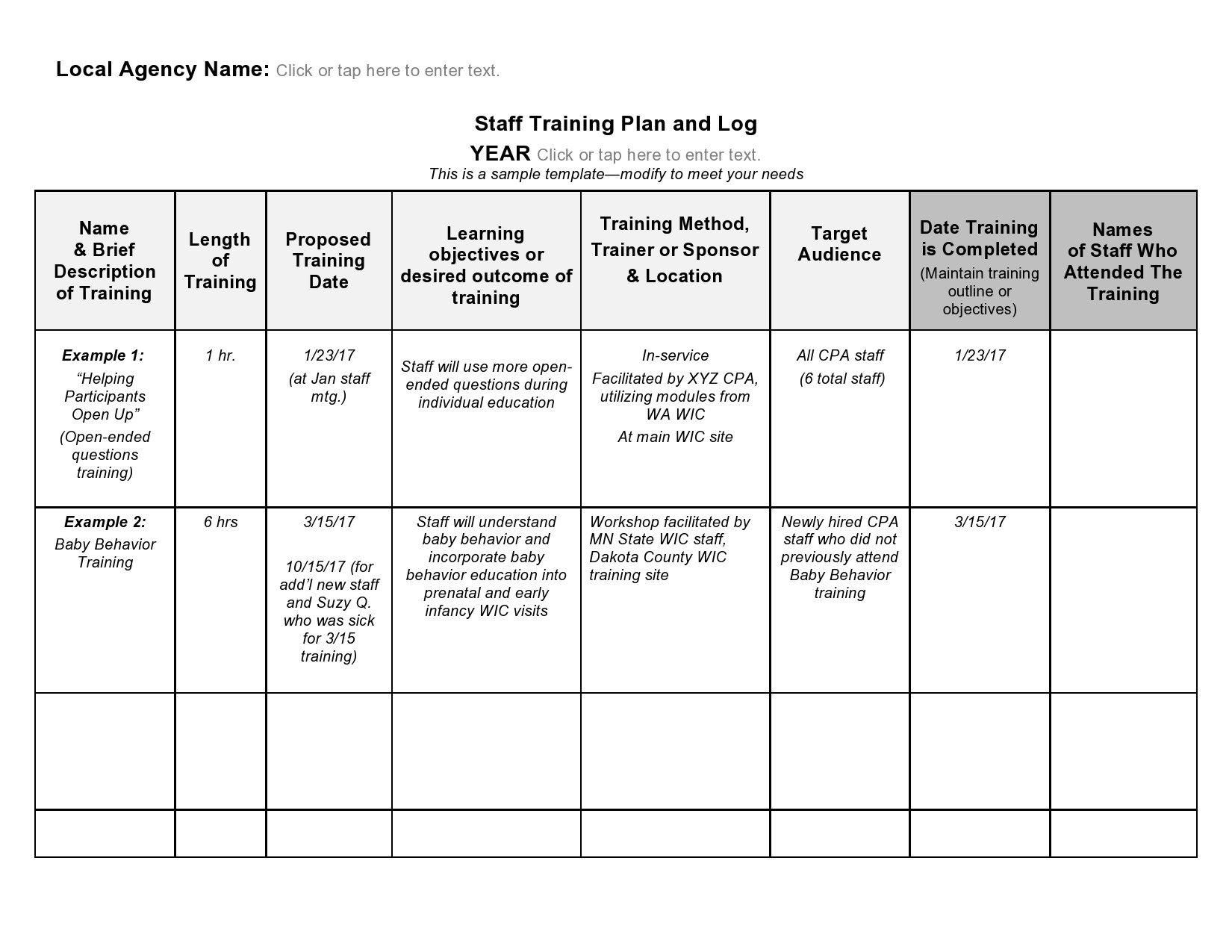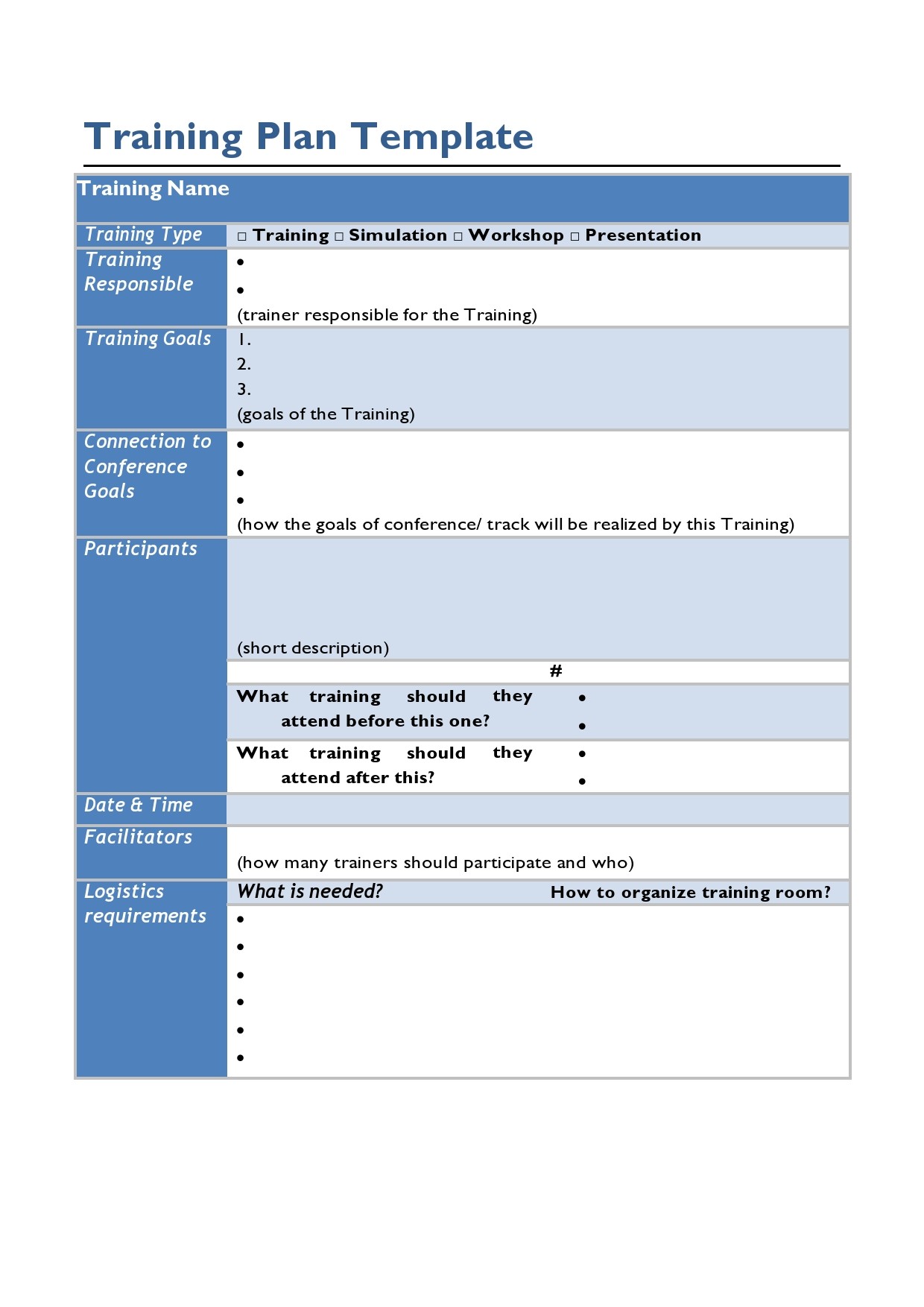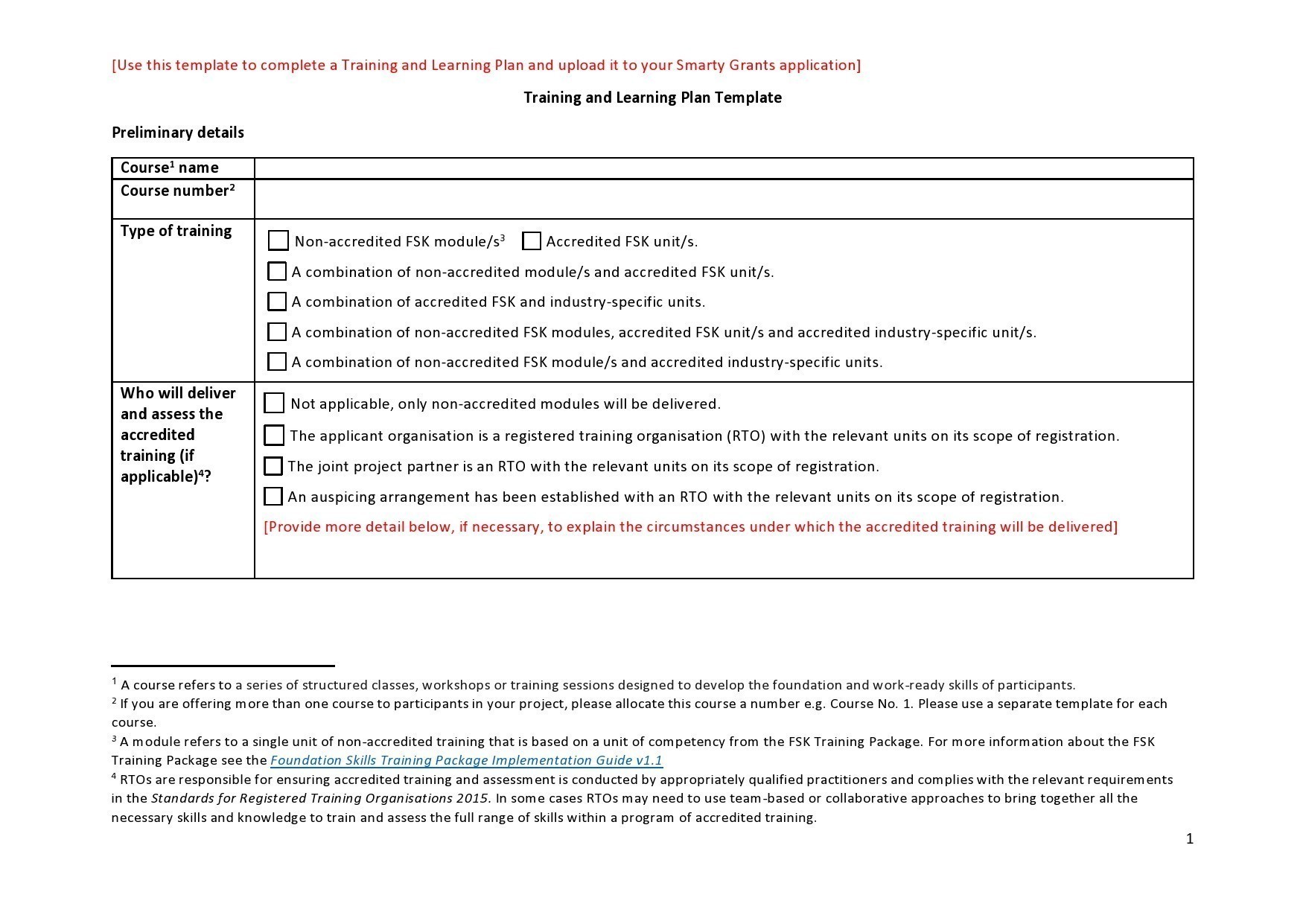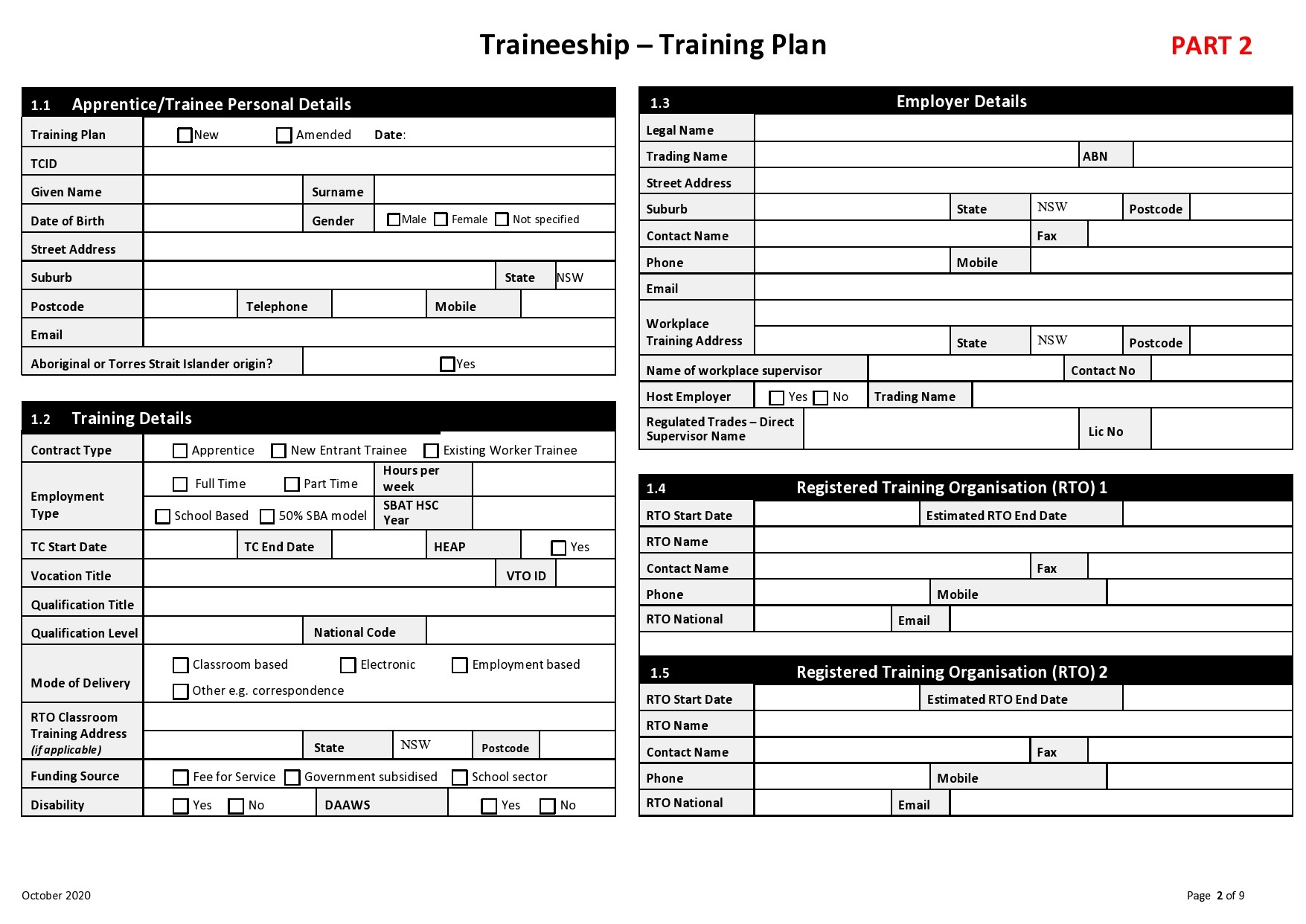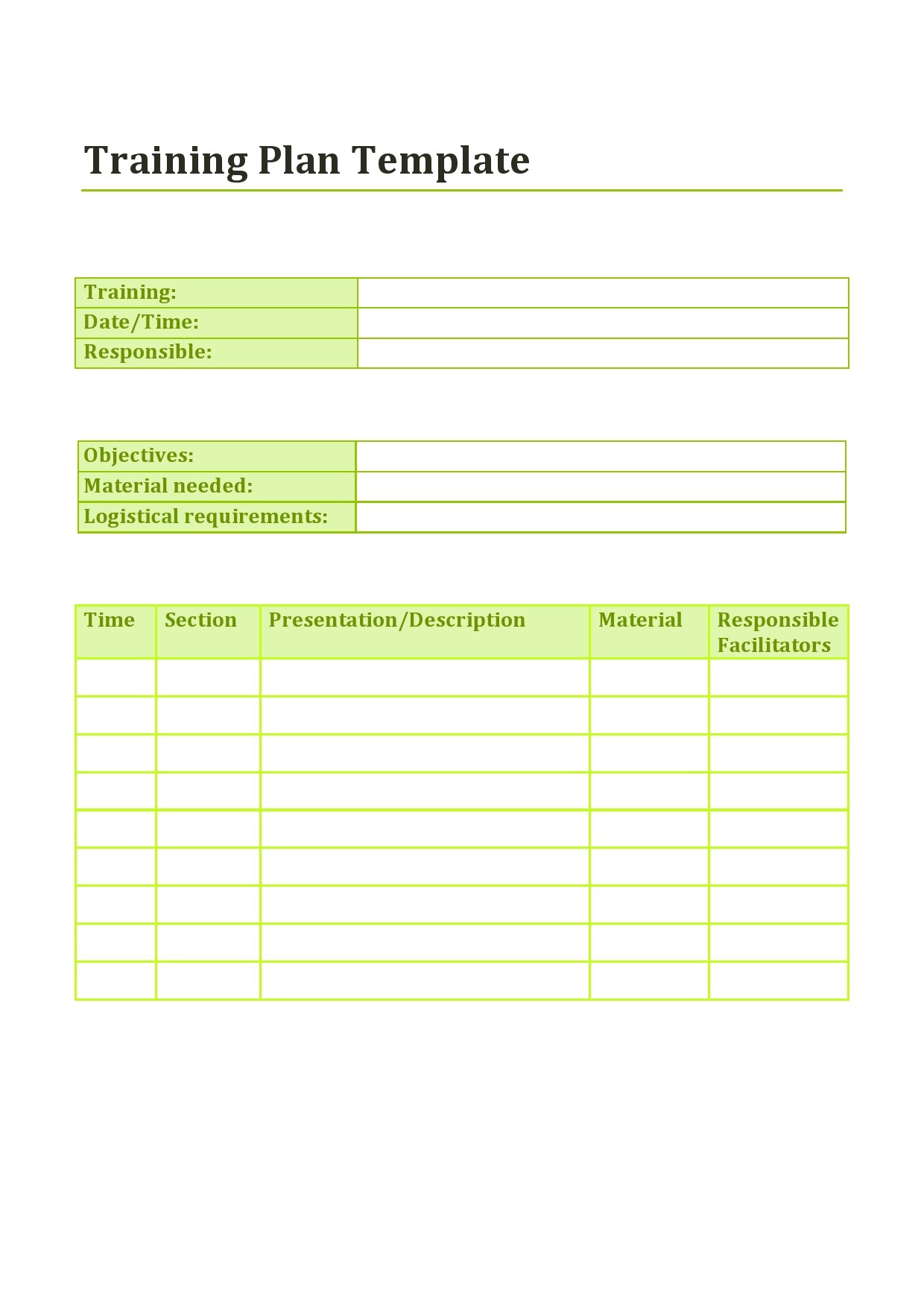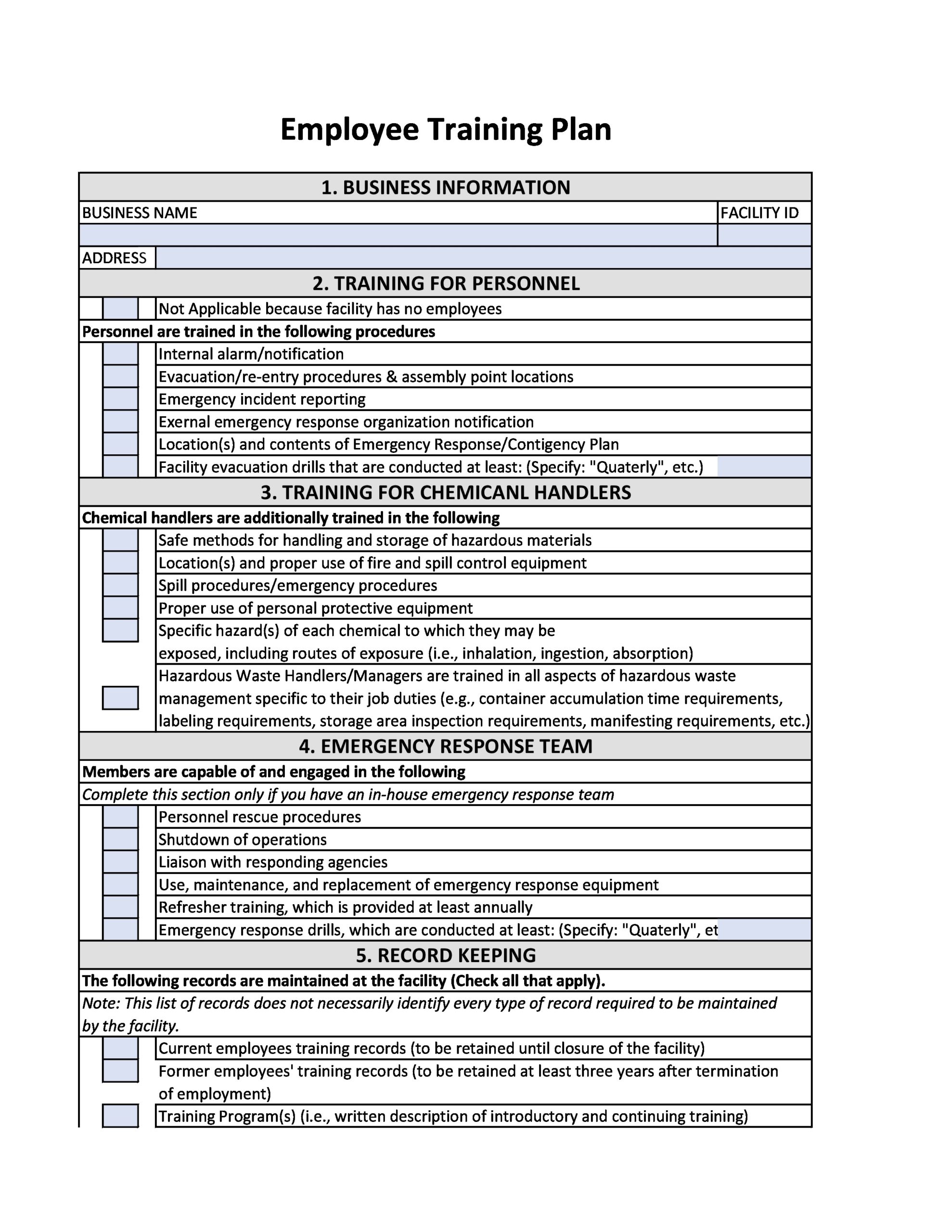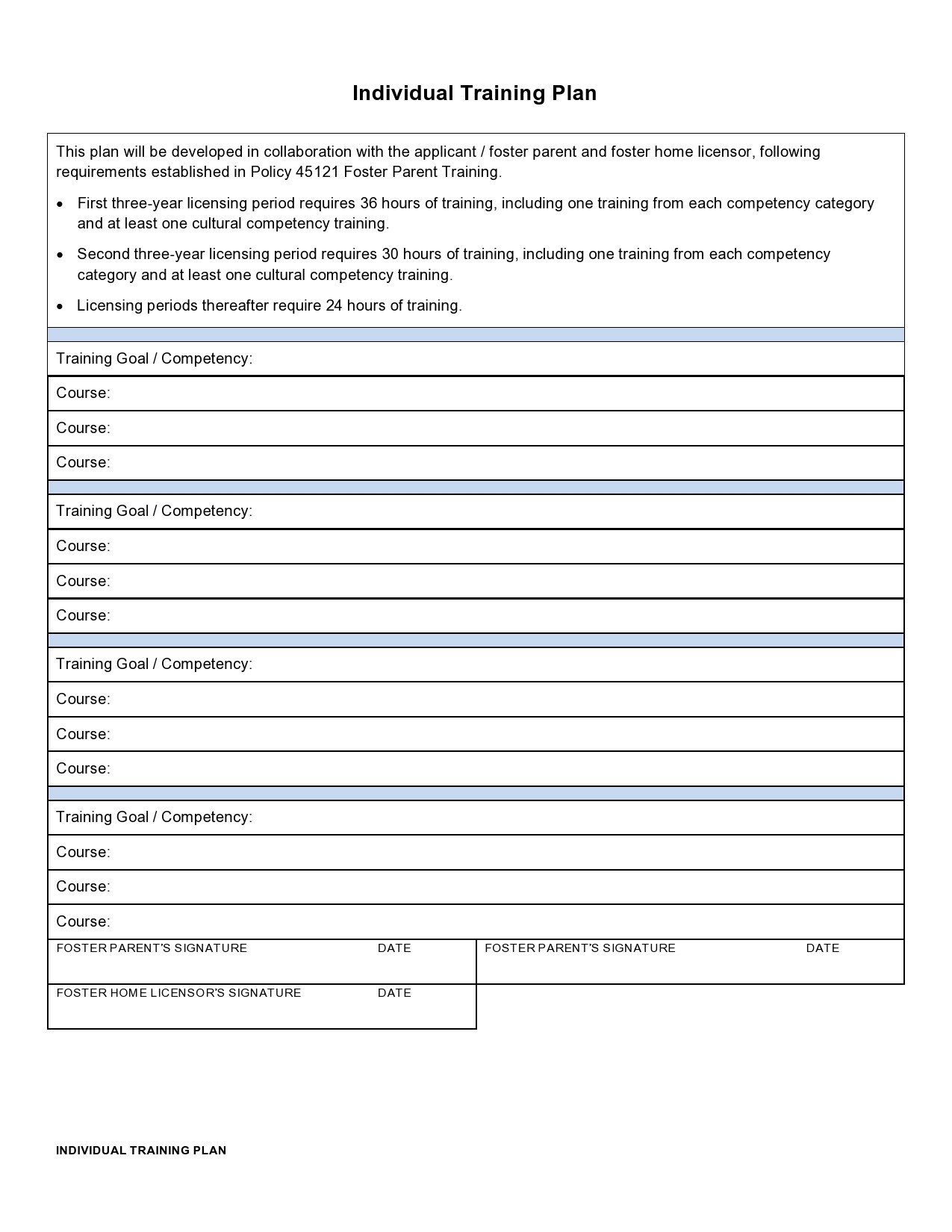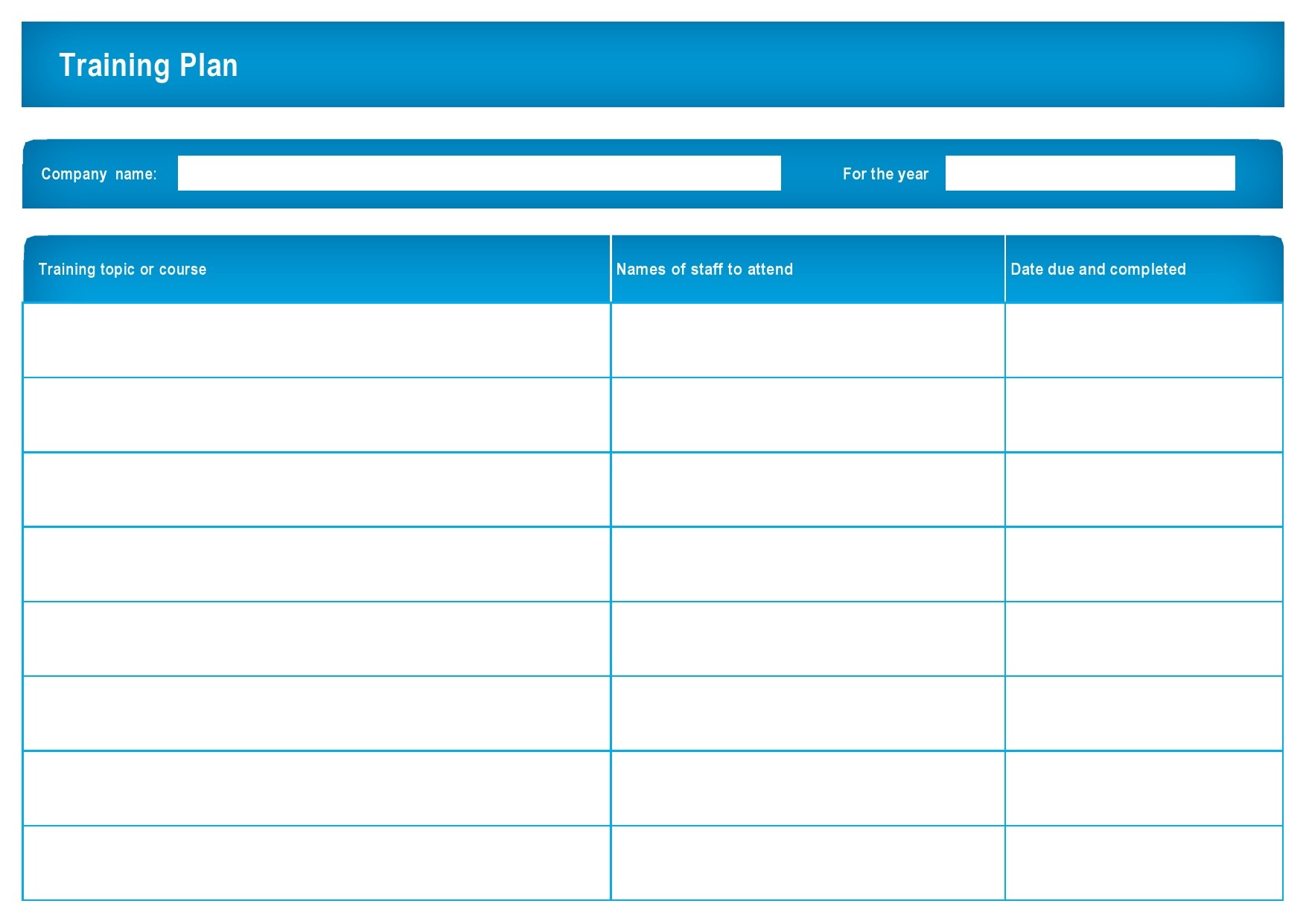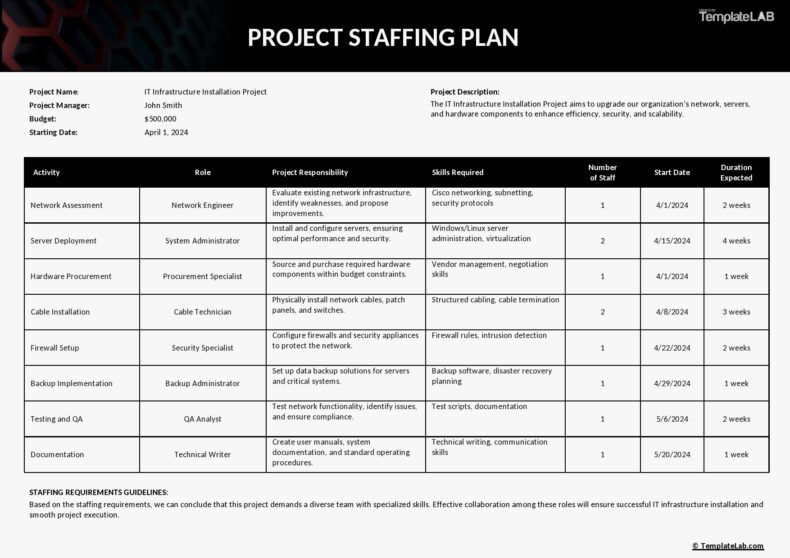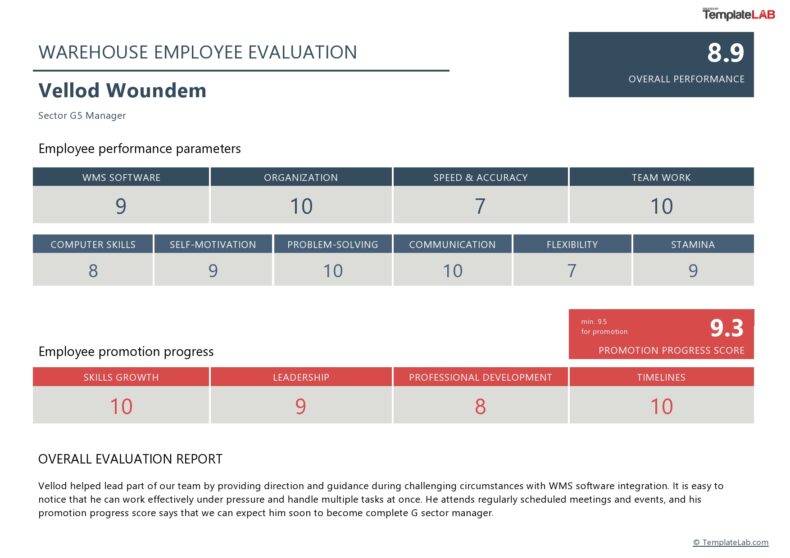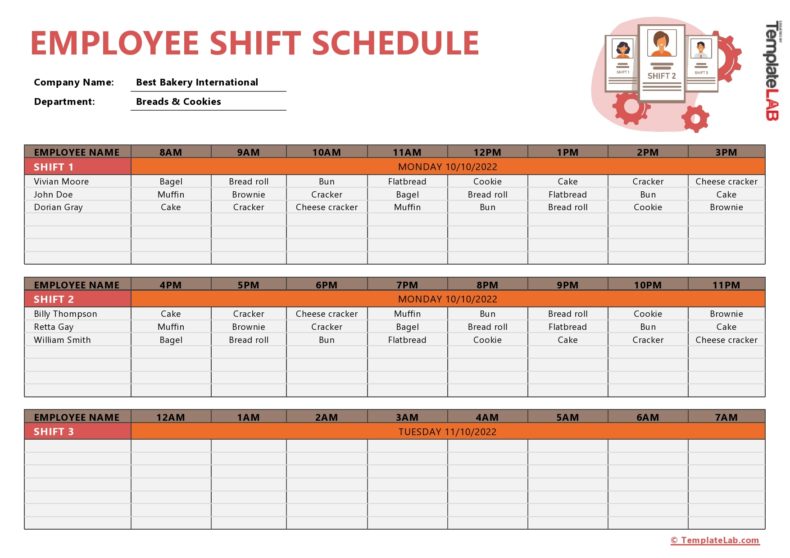In all companies, one of the greatest assets is its workforce. As an employer or the HR head, you must provide your employees with the necessary training that will strengthen their skills, which ultimately boosts company growth. Giving them the right training reduces weaknesses that can slow down your company’s growth, operations, and the overall success. To achieve the targets in this regard, you need a training plan template.
Table of Contents
Training Plan Templates
What is a training plan outline?
You use a training plan template as an outline for the needs, objectives, curriculum, and strategies that you need to address when the employees use any enhanced or new changes in your company. Your plan should include your target audiences and the topics that it will cover.
Training Schedule Templates
Why do you need a training plan?
Since your employees are your most valuable asset, you want them to become efficient in their jobs. In turn, this will be good for your company. This is the main reason why having a training plan template is one of the most important things you can do for your company.
The employee training plan template provides you with the tools that guide your employees in improving their productivity. These days, training plans or training schedule templates differ from the ones in the past. This is because these plans need to adjust to the changing conditions in the world of business.
A sample template allows you to build your own plan from scratch or you can customize it to suit your needs. Here are the benefits of having this plan:
- It gives you an advantage towards your employees’ productivity and it promotes a healthy work culture.
- Your new employees will have a clear path to productivity as the plan will set them up for success.
- It provides empowerment and realistic expectations in the workplace to create a thriving culture that will come to fruition.
- It helps you be better than your competitors. Since a plan helps your employees succeed, then your team will have better chances to win in the market and in the eyes of your customers.
Training Curriculum Templates
How do you write a training plan?
It is essential for you to “do your homework” by thoroughly researching your company’s situation. This is a must before you start making your training plan template.
You will be much better prepared to create a customized and relevant plan if you gather as much information as you can in the different key areas of your company. Here are a few tips to help you make your training programs template:
- Determine your company’s training needs
You can use your company’s various resources to help you determine your employees’ training needs. Before creating your training plan template, consider the following:
Company Goals
Reference your company’s goals to help you define your training program’s goals. You should align your goals with those of your company’s in such a way that when your employees meet these goals, they would also meet your company’s goals.
Job Descriptions
You should include job descriptions as your basis for the training your employees need.
HR Complaints
Reviewing employee complaints will help you prioritize training on harassment, discrimination, overtime, and other common employee issues.
Legal Obligations
You have to make sure that your training curriculum template includes all the required training to meet legal and government obligations. This is a must. - Determine the Employees You Will Train
As soon as you have finished compiling all of the topics to cover in your training, it’s time to determine which of your employees need training. You can use other available resources of your company to identify these employees. For this, you can refer to:
Company Policy
For certain subjects or areas, it can be your company’s policies that will determine who needs training and in what frequency. Use these policies to start your list of employees.
Employee Records
Reviewing the records of your employees will help you determine which employees might need more training. Some examples of training include those for discrimination and harassment complaints, sensitive training, those who need to improve their performance, and those who need to improve their skills.
Performance Data
Reviewing the performance information of your employees will help you identify any weaknesses. Those who have such weaknesses might need refresher training. For instance, in how to properly use machines and equipment more efficiently or how to apply productive measures while working. You can also develop your own methods for determining which employees will need training in your company.
Observations
Vigilantly keeping your ears and eyes open in the workplace will help you identify those employees who need training in specific areas.
Informal Discussions
Make it a point to talk to your employees, supervisors, and managers frequently. Doing this enables you to get candid information about areas where employees feel well-equipped to perform their jobs and areas where they feel they need to improve.
Focus Groups
This involves selecting a group of employees who you will ask designed questions regarding training. The activity will be your chance to gather relevant information in a short amount of time. Focus groups are ideal for brainstorming and can be a valuable information source. Just make sure that the group you choose consists of people who are both outspoken and articulate. A quiet group might not have anything to contribute.
Interviews
Another effective way to discover what training your employees want or need is through personal interviews. However, this method can be time-consuming. Therefore, it’s recommended for specialized training that only affects a small number of people in your company.
Questionnaires
Come up with a questionnaire specific to the training plan template Excel you’re planning to create. This method is effective for new or elective training areas. Make sure to keep all of the answers confidential so that your employees will feel comfortable enough to provide honest answers.
Demonstrations or Skill Tests
Conduct written tests or have your employees perform demonstrations on certain equipment to determine who needs additional training. - Learn How to Train Your Employees
Adults are generally self-directed learners. They have their own learning styles, which usually include certain parameters. As a trainer, you might have to structure your training programs to meet these parameters. Despite this, you might still encounter reluctant learners. To overcome this issue, can consider these factors:
Motivation
Start with an open or friendly tone for each session to create a feeling of concern then set an appropriate difficulty level for your training. Other motivators for adult trainees may include:
Personal achievement, which gives your employees an opportunity to attain a higher job status in your company.
Social well-being, wherein you include opportunities for your employees to perform work in the community.
External expectations where your employees will have to meet the expectations of a formal authority figure.
Social relationships where you include opportunities for your employees to make friends and satisfy their need for association.
Stimulation to break your employees’ work routines and provide contrast in their lives.
Interest in learning to provide your employees with knowledge and satisfy their curiosity. - Know Your Audience
You can make each training session as effective as possible by analyzing the participants in each of the groups. You should also know the learning styles of your employees are. The three most common learning styles are:
Visual
These learners best receive information by reading and seeing it. Their brains process the visual information then retain it after seeing it. These learners benefit best with diagrams, written instructions, handouts, videos, overhead projections, and other visual presentations.
Oral
These learners best receive information when they hear it. They learn best through audio-conferences, speakers, Q&A sessions, discussion groups, and other oral presentations.
Tactile or Kinetic
These learners best receive information through their sense of touch. They can best benefit from “show and tell” or hands-on activities where they handle the materials. They also learn effectively if you give them the chance to practice.
As a trainer, you must cater to different types of learners. Therefore, it becomes important to include a combination of teaching styles into your plan for training. - Draft a Comprehensive Blueprint
After your research, you will determine what your training needs are, who needs training, and how you can best train them. Next, it’s time to develop your plans. Here are the steps to do this:
Use quantifiable measurements for the accomplishments that you want your employees to achieve after their training. Examples of this include an increase in their production quota in the case of sales training or a decrease in office injury rates in the case of safety training.
Whenever possible, use charts, tables, and graphs to present specific trends and numbers that your training program should achieve. For instance, charting an increased productivity curve you want your employees to reach with your training or graphing the injury rate you want to see after a certain amount of time.
Your target goals should be both achievable and realistic although they don’t have to be too easy. You should know your employees well enough to know how to challenge them to improve their performance.
For instance, you can check the highest production peak your employees have achieved even if it only has happened one time. This time, set targets slightly above the point they achieved. Your employees will know that they can achieve the goal because they’ve done it before. But they also know that you’re challenging them to do better.

